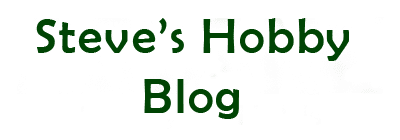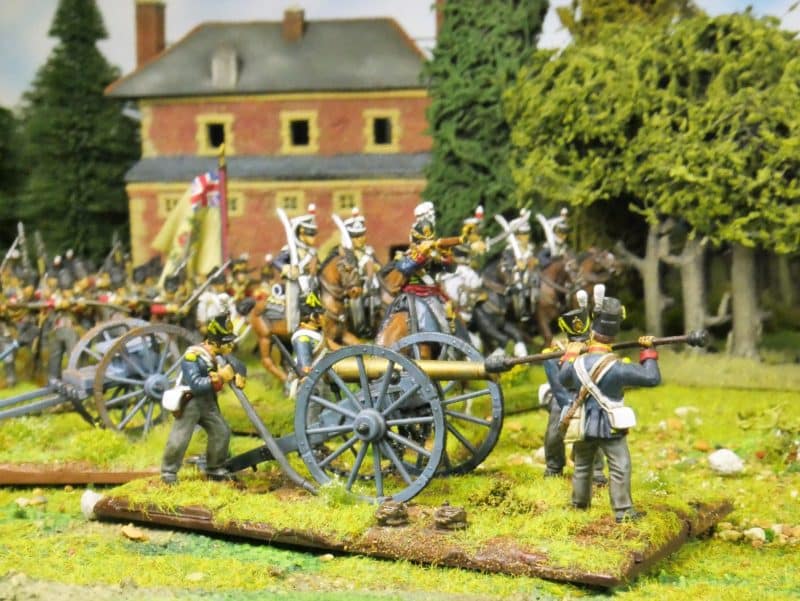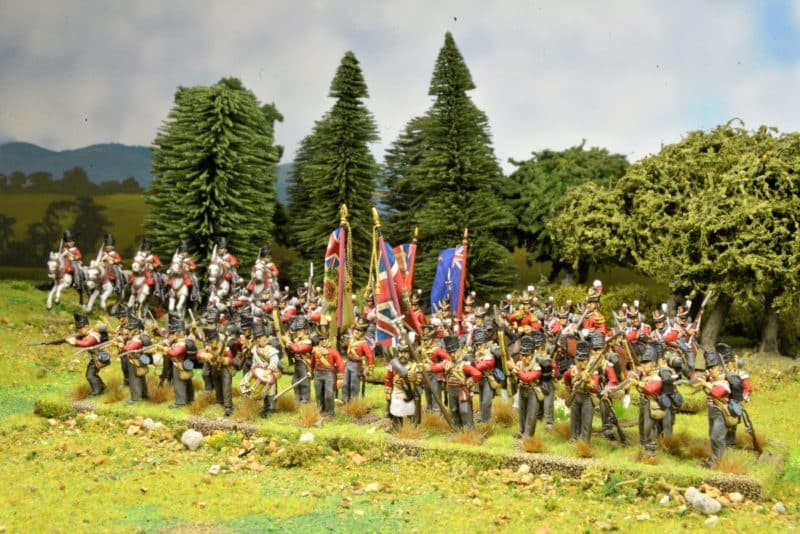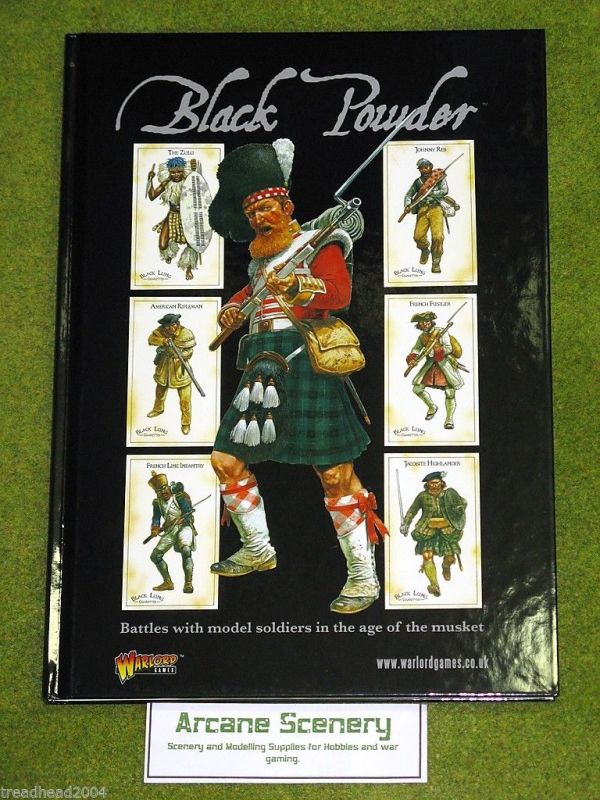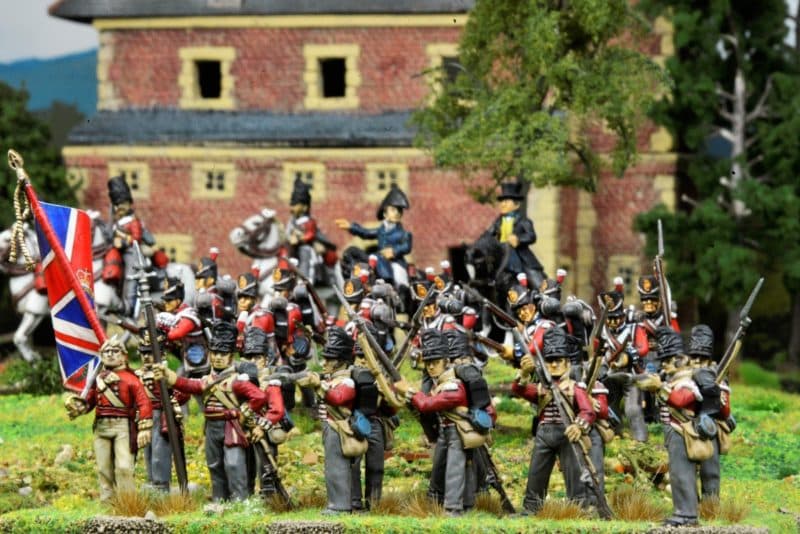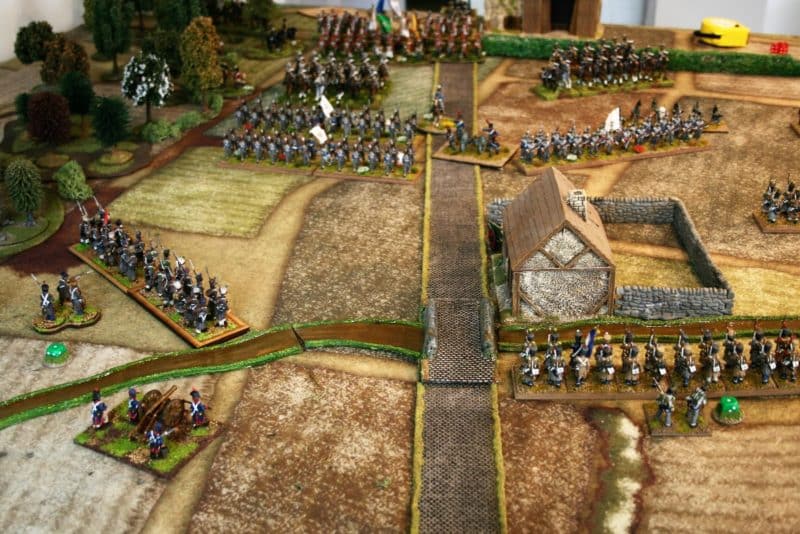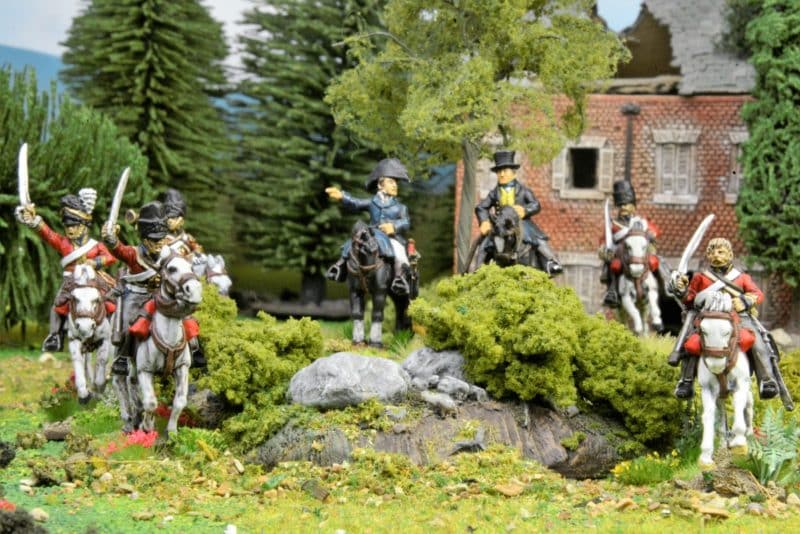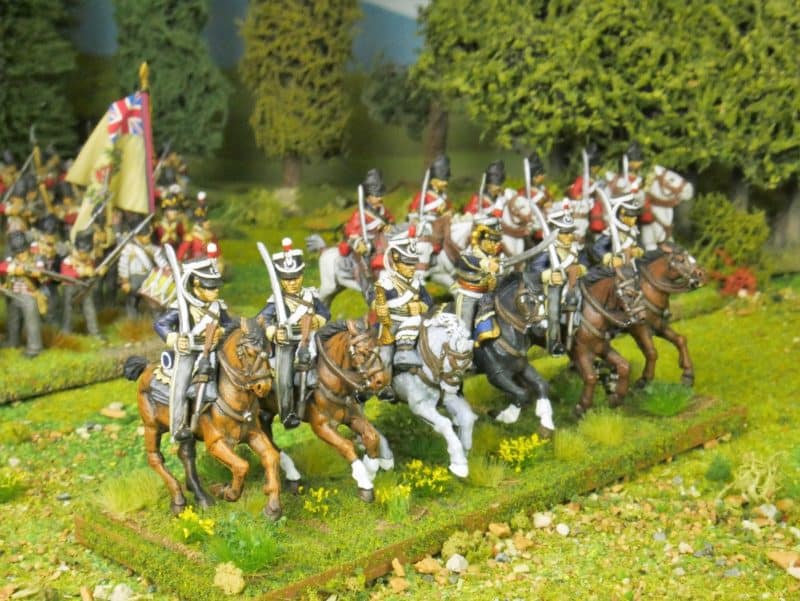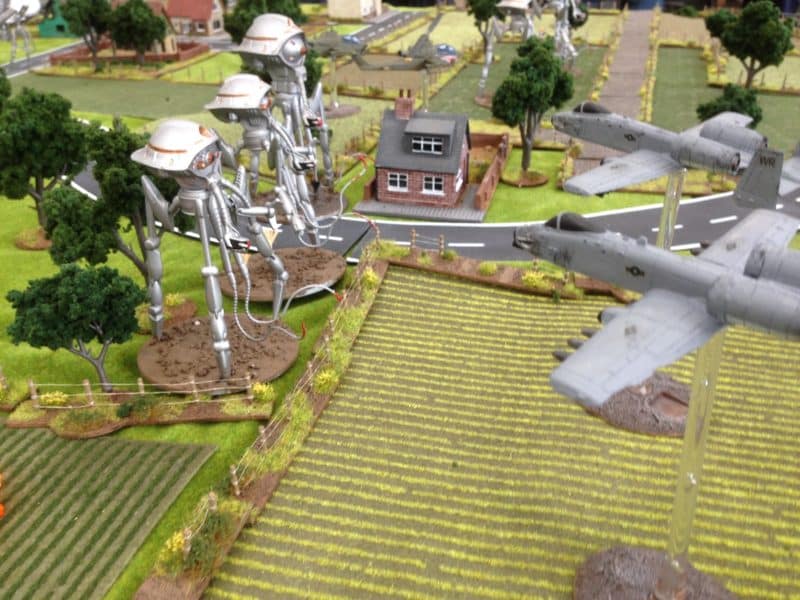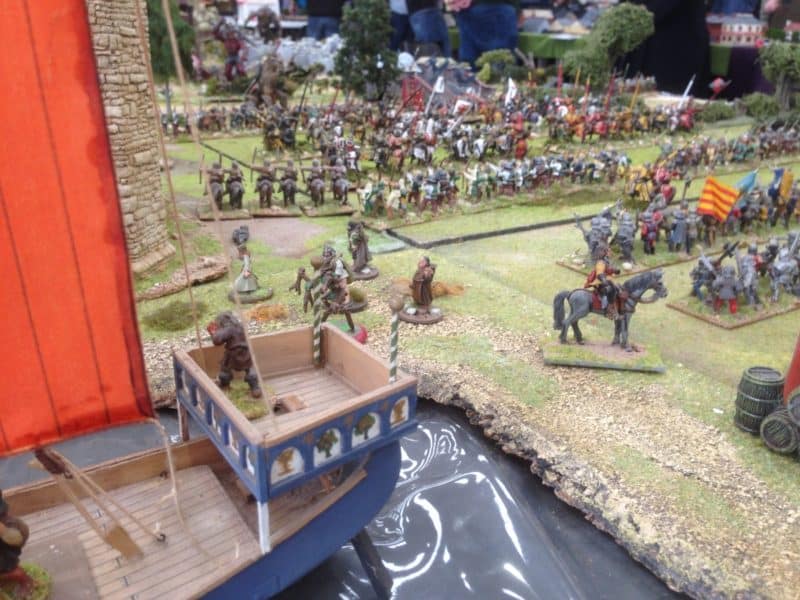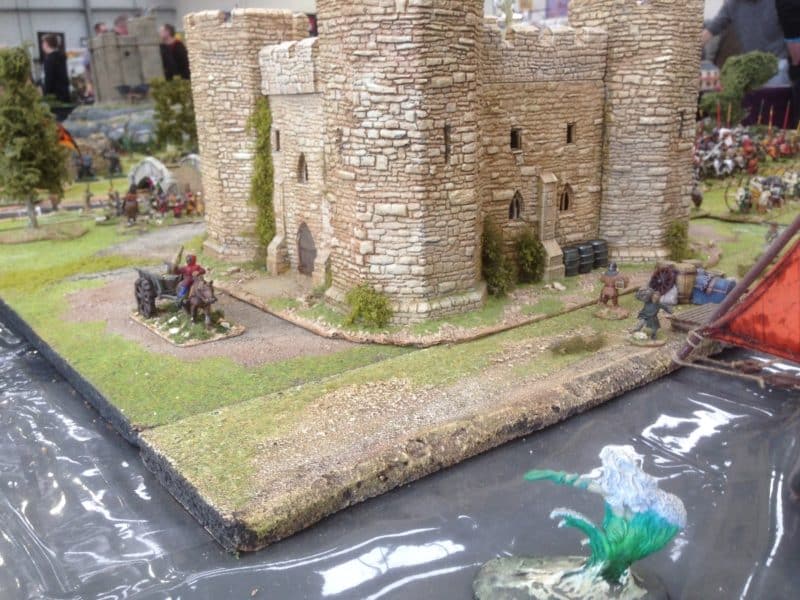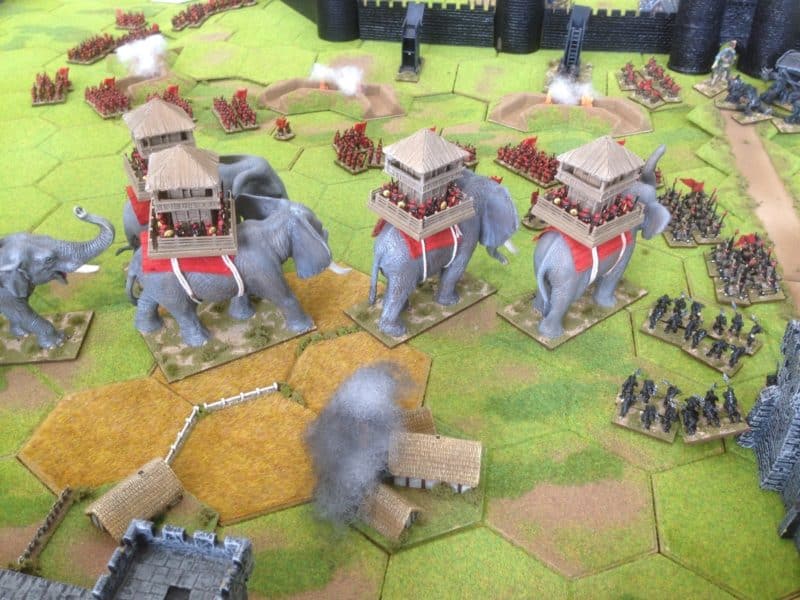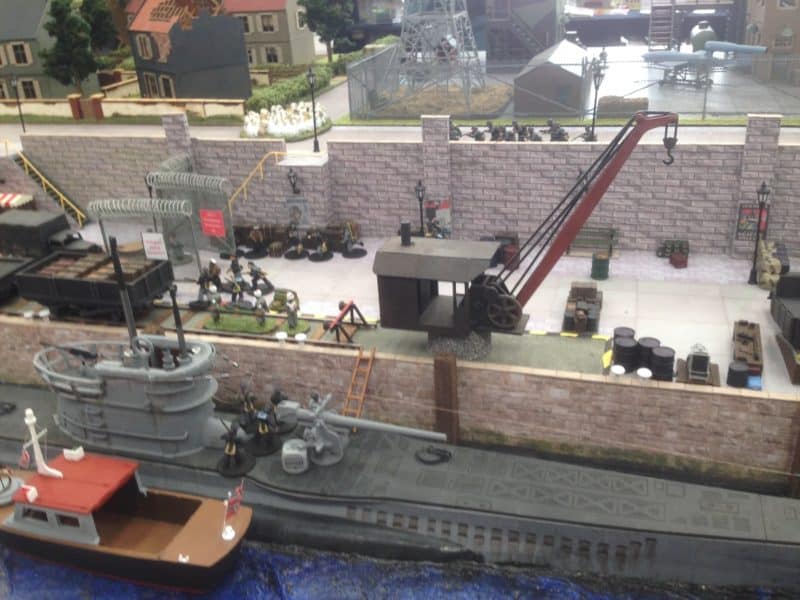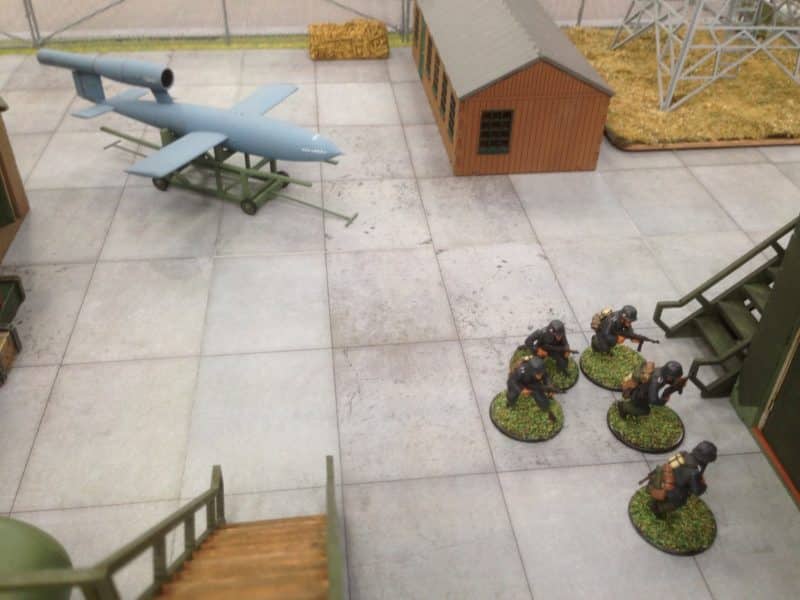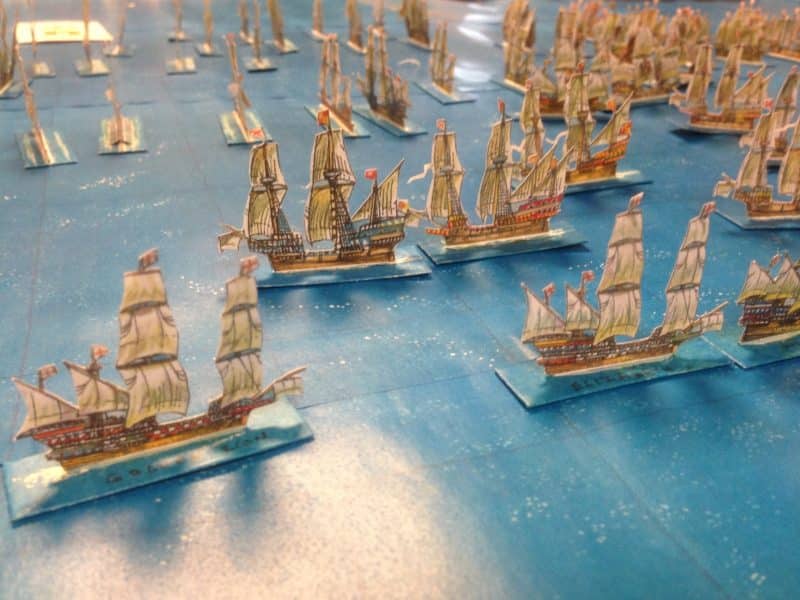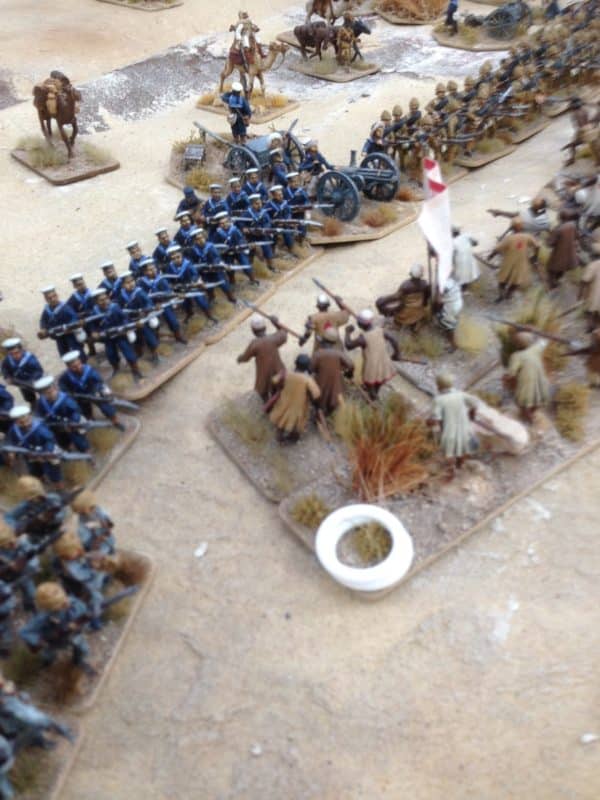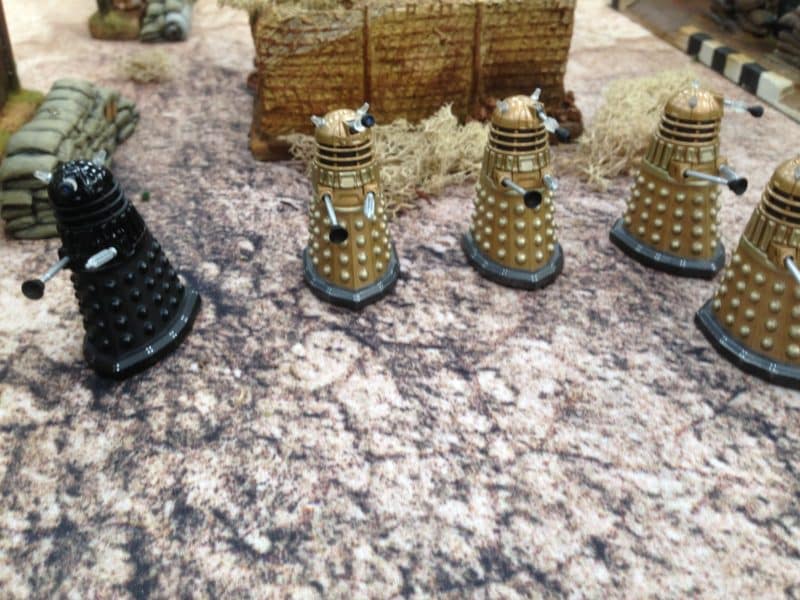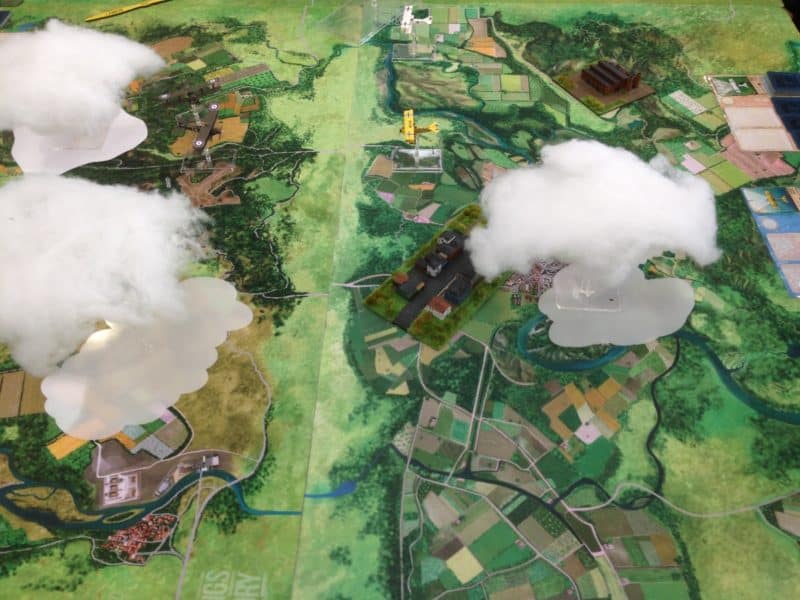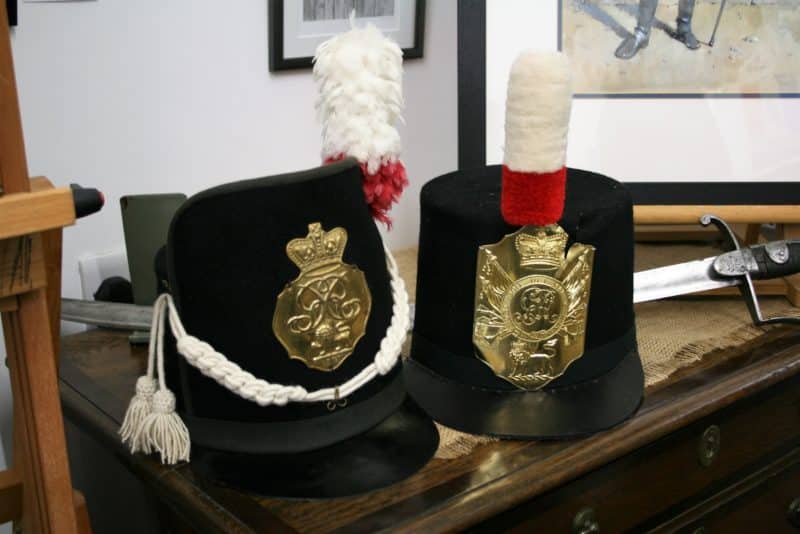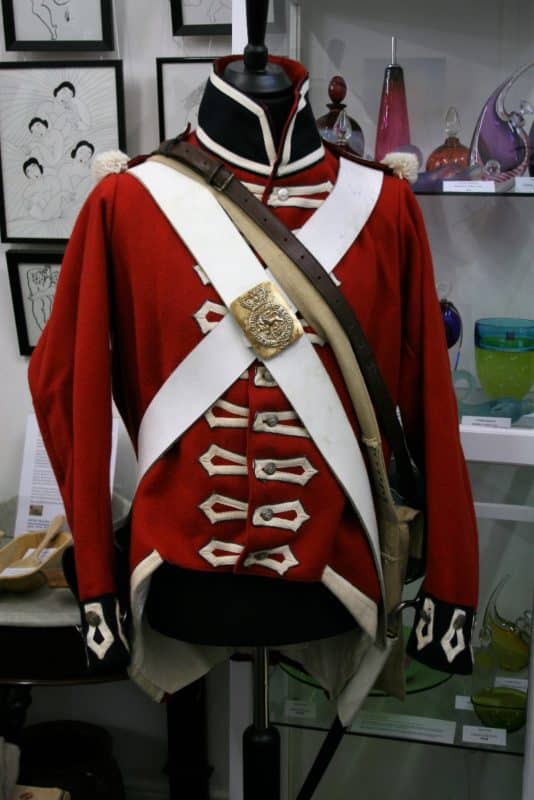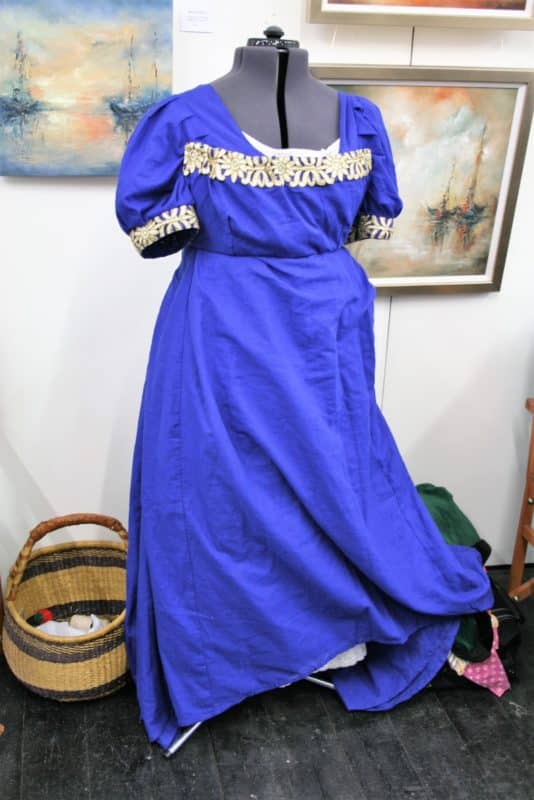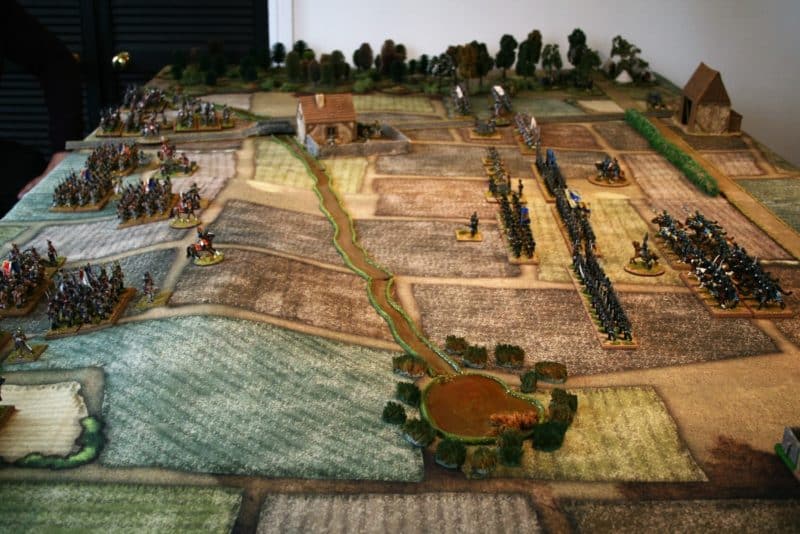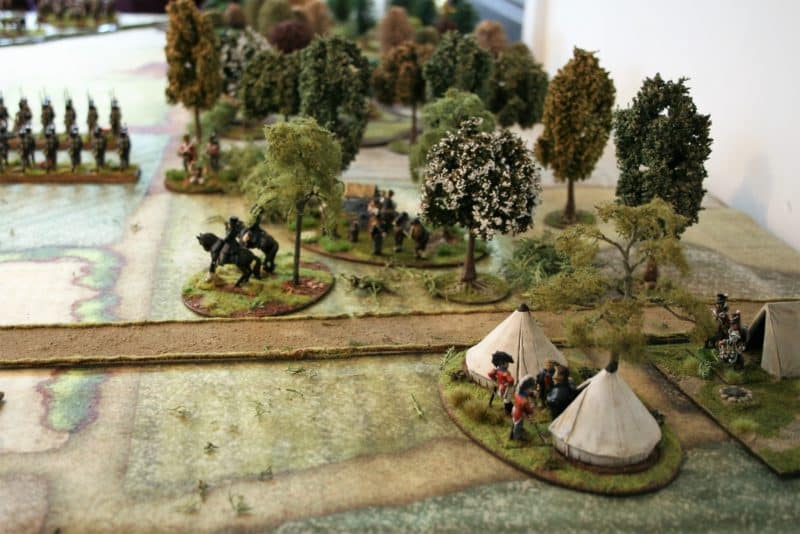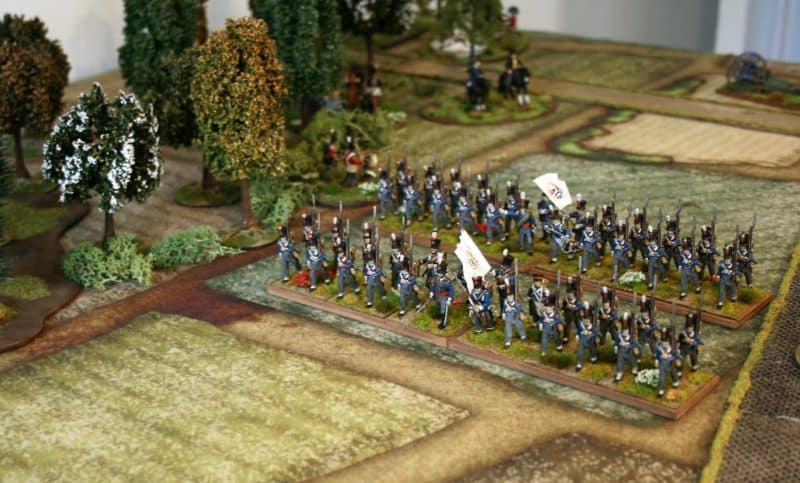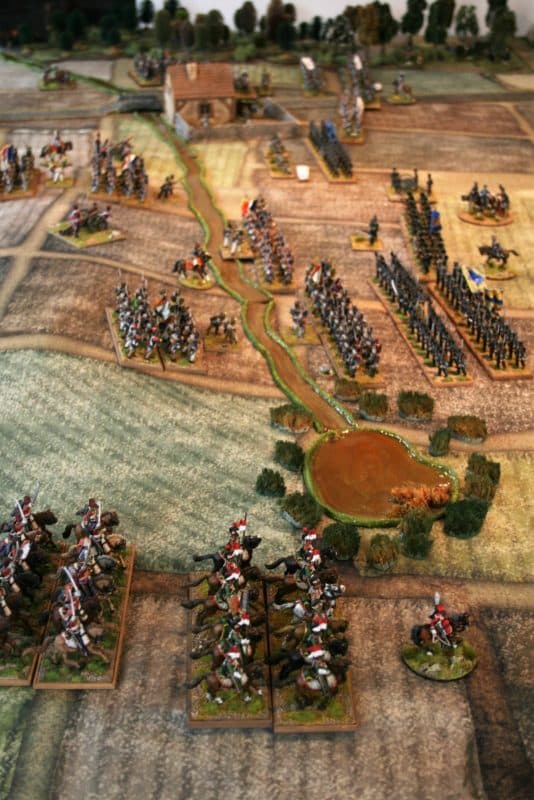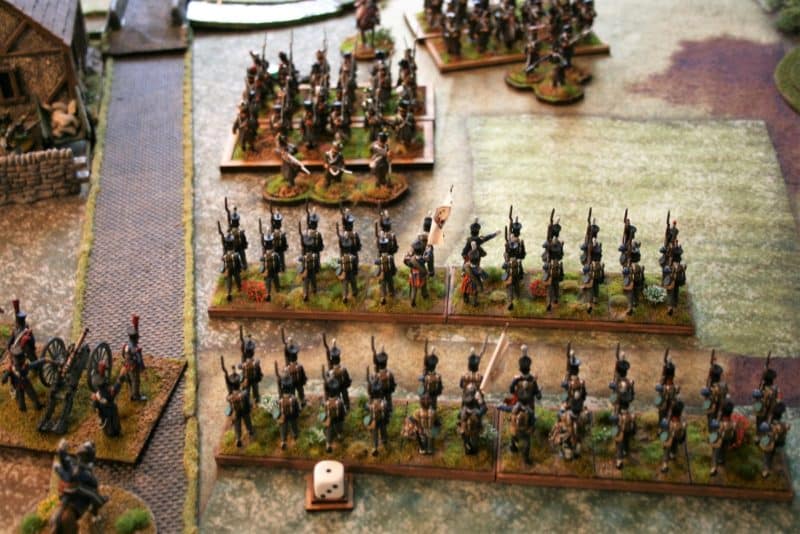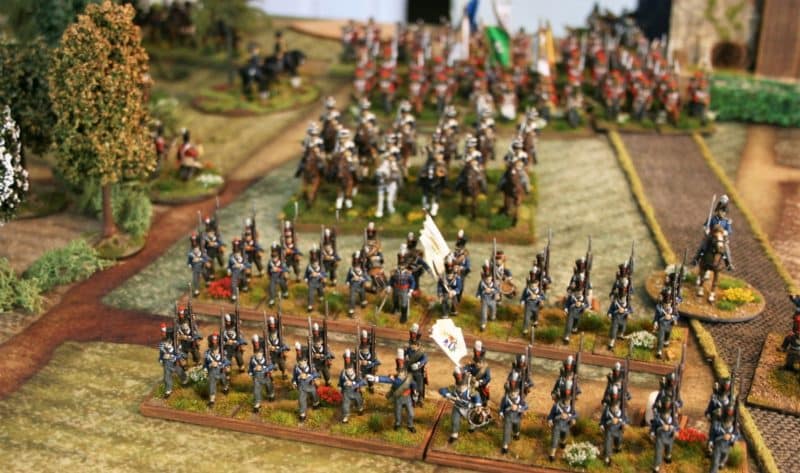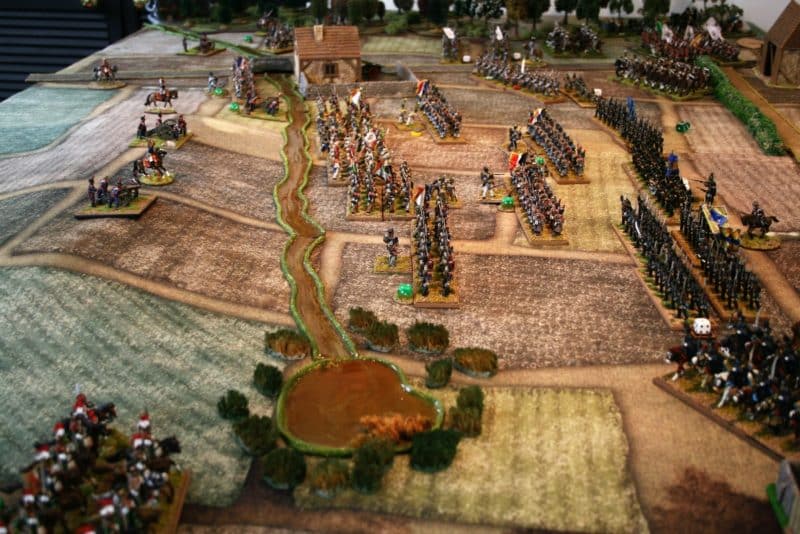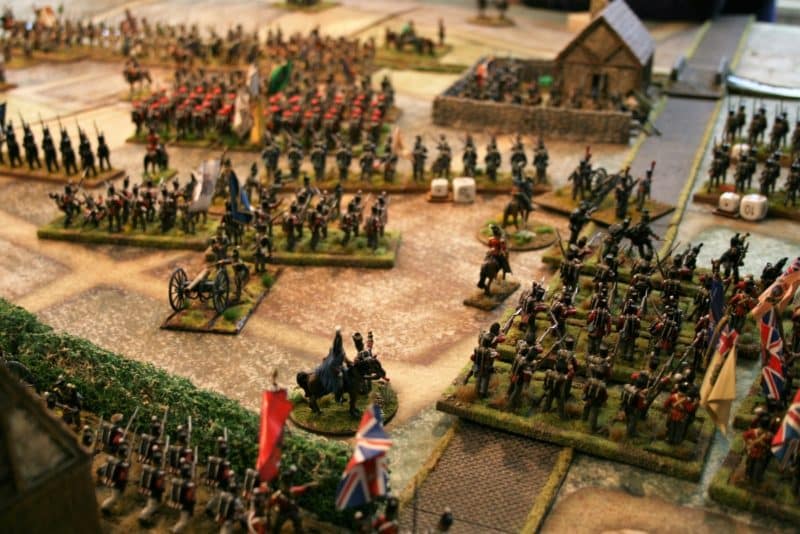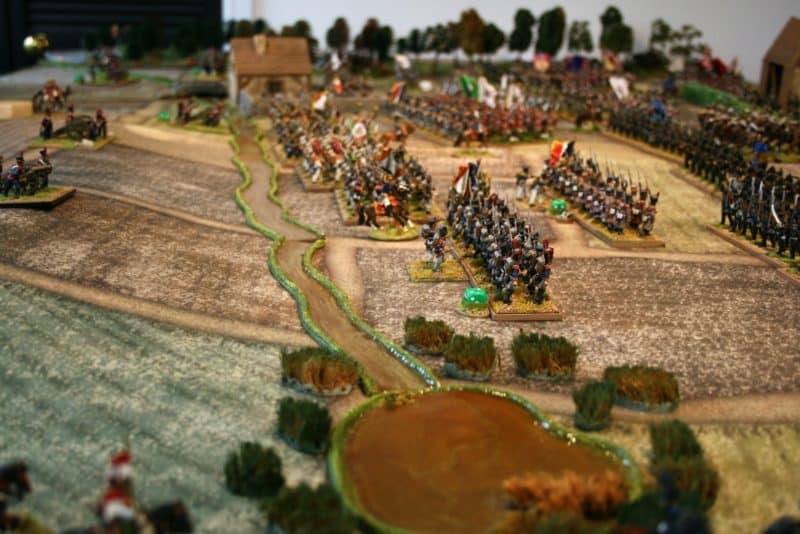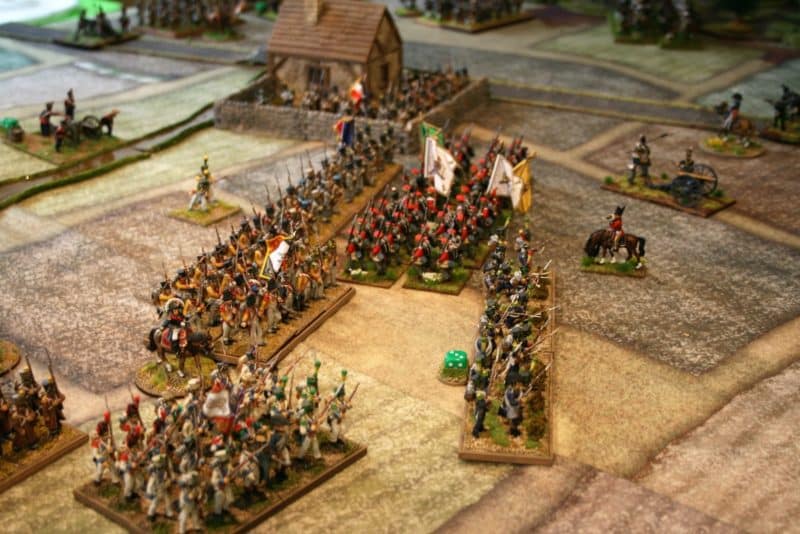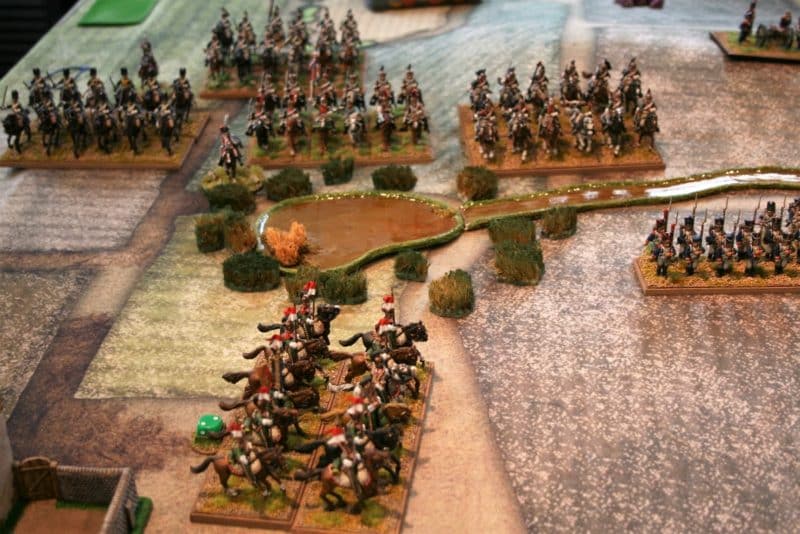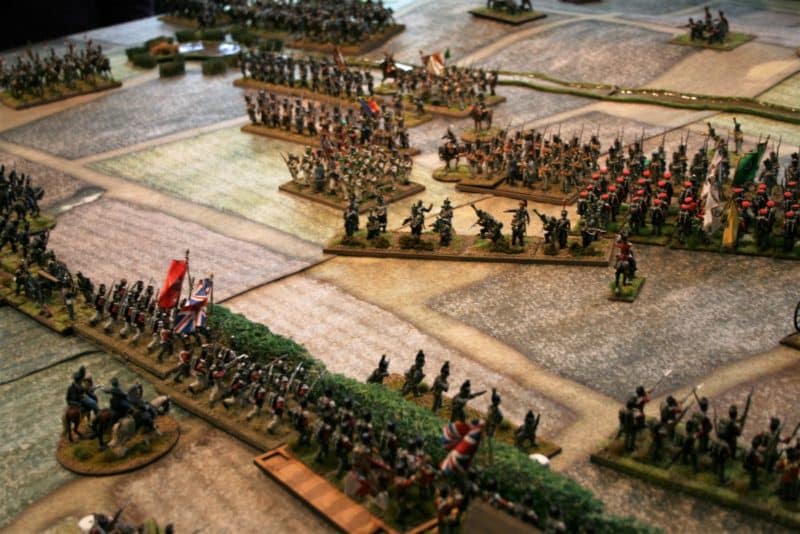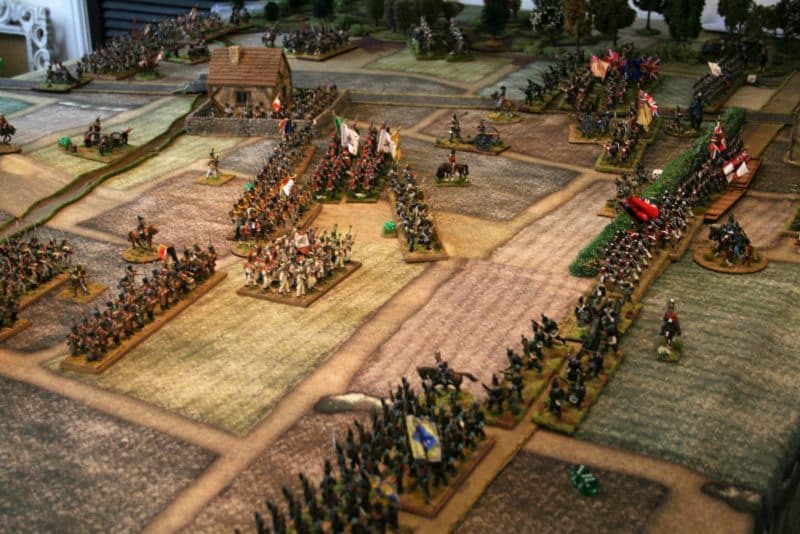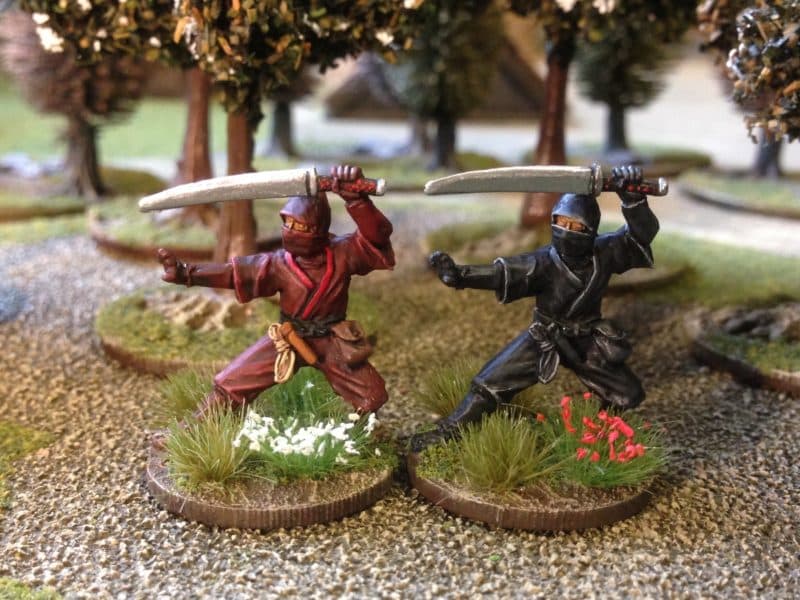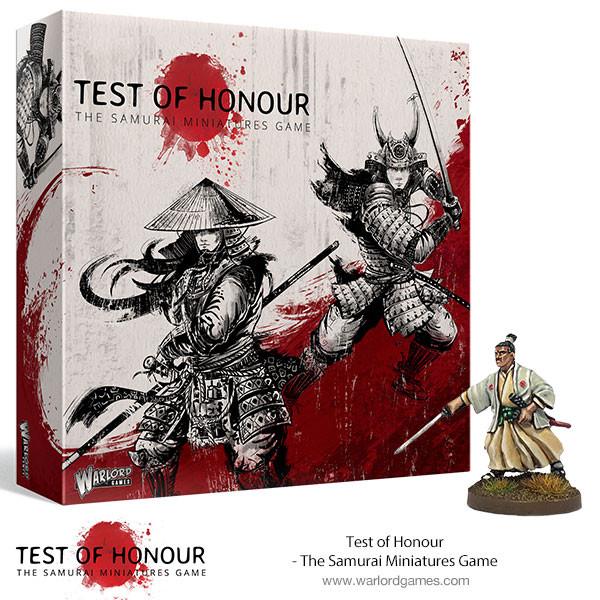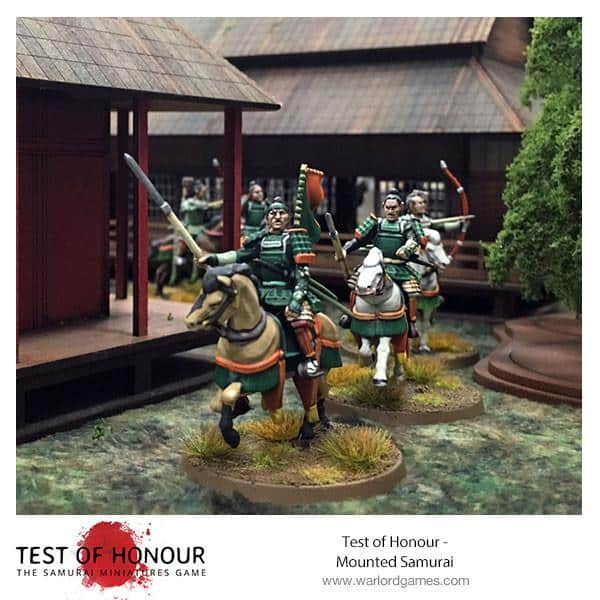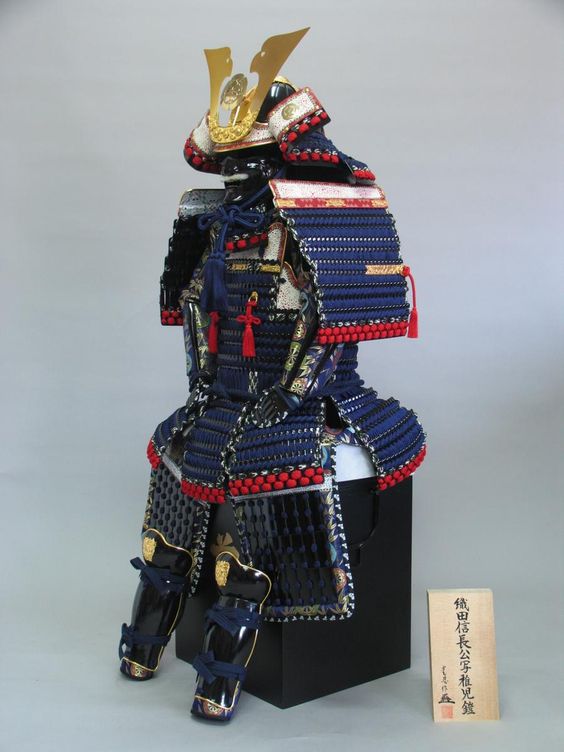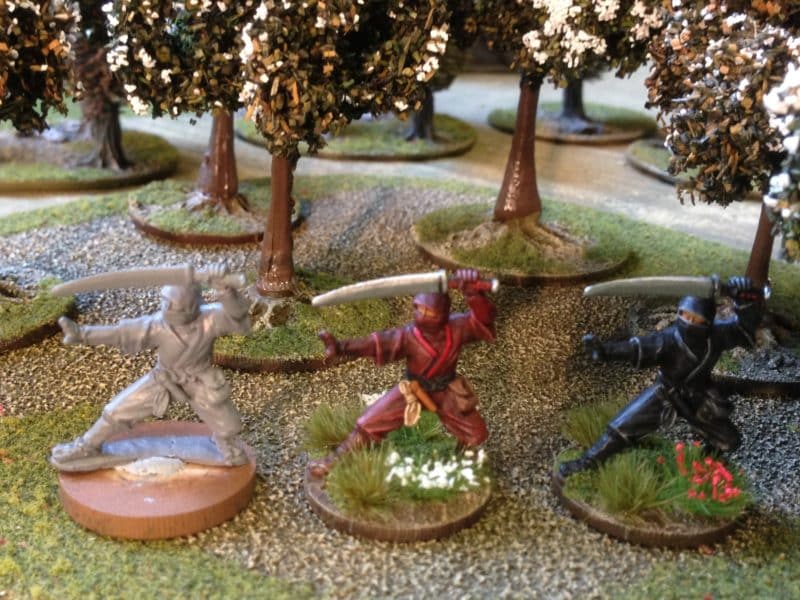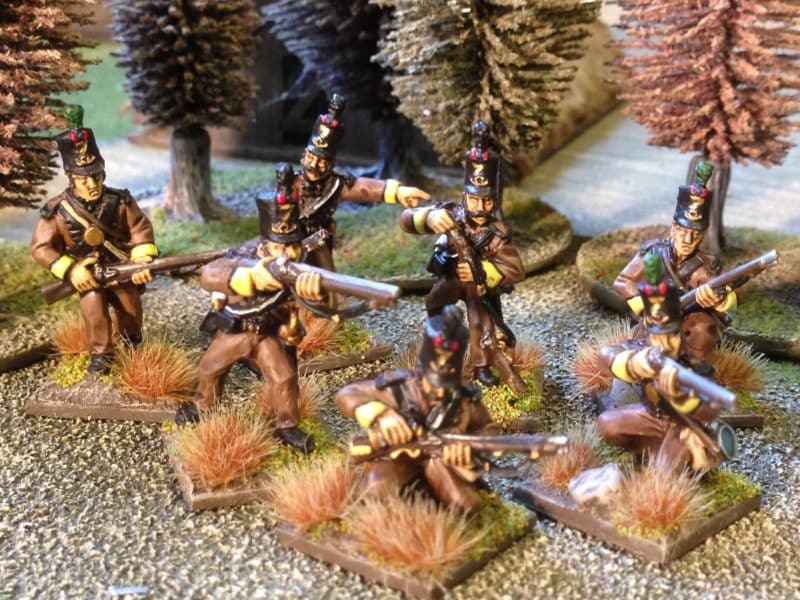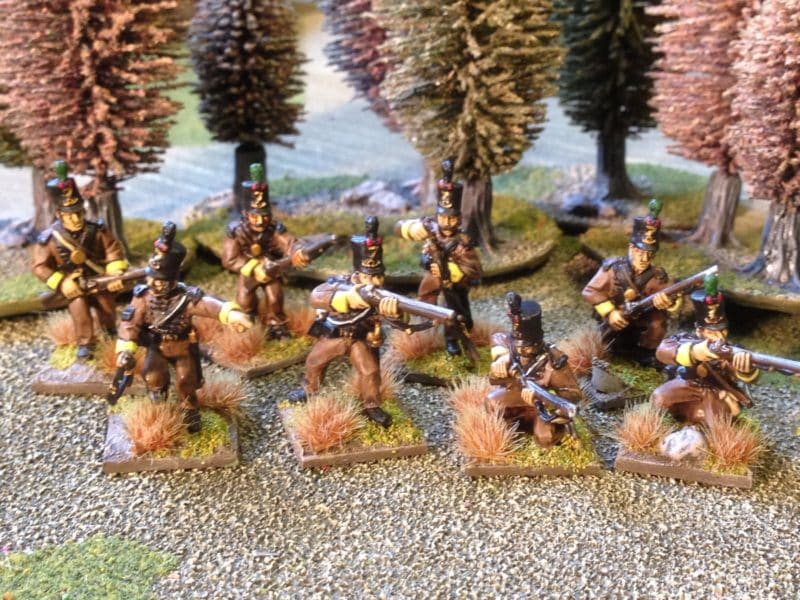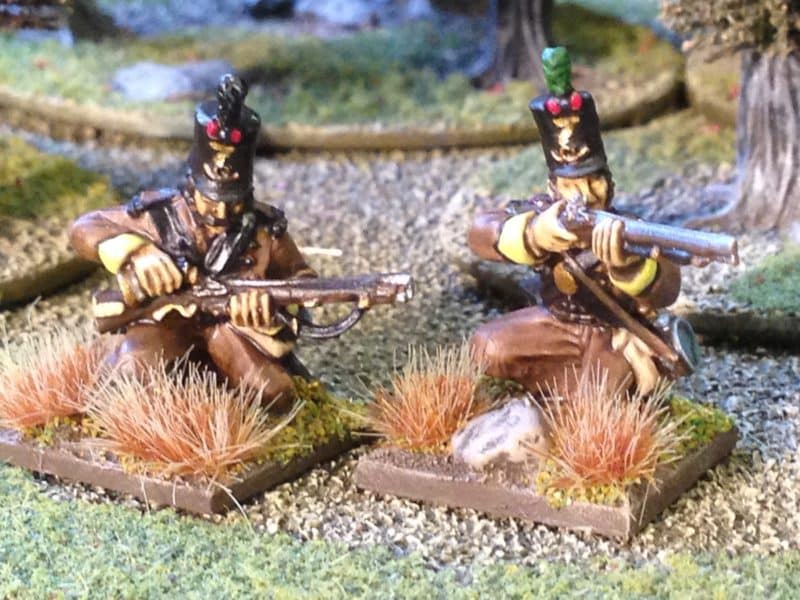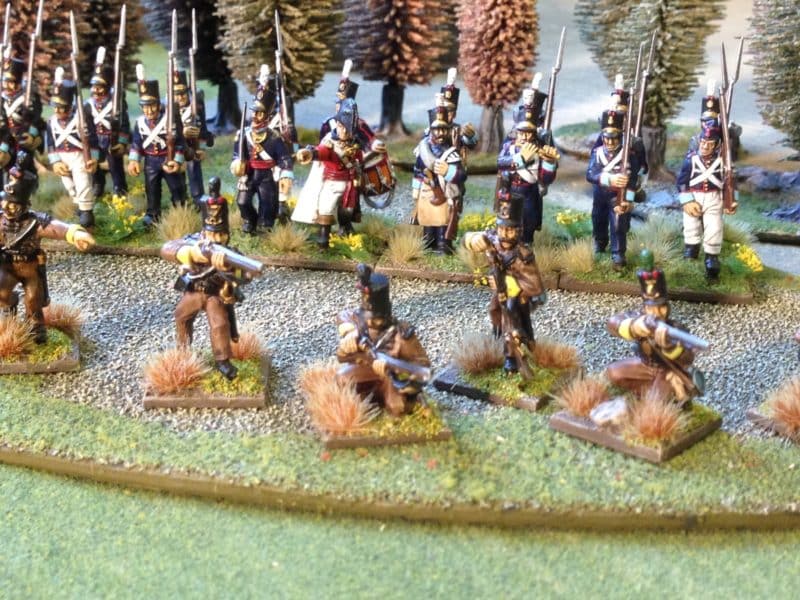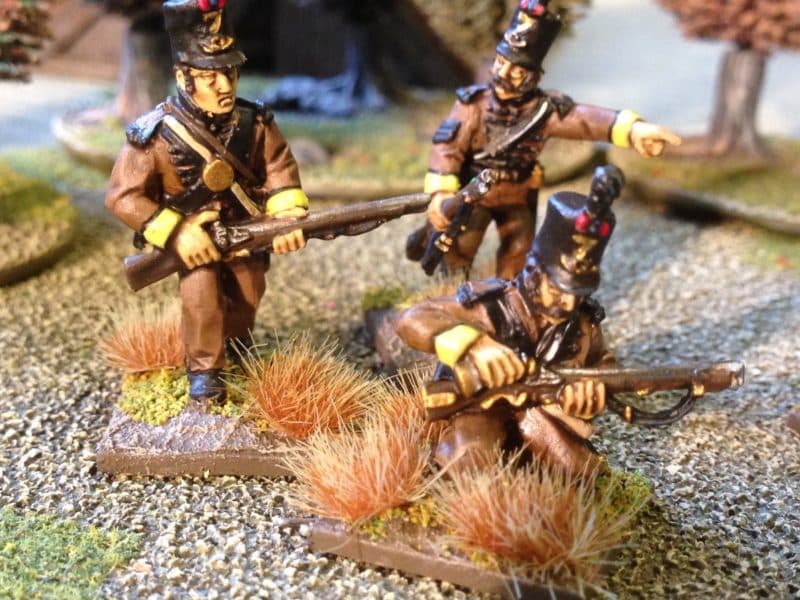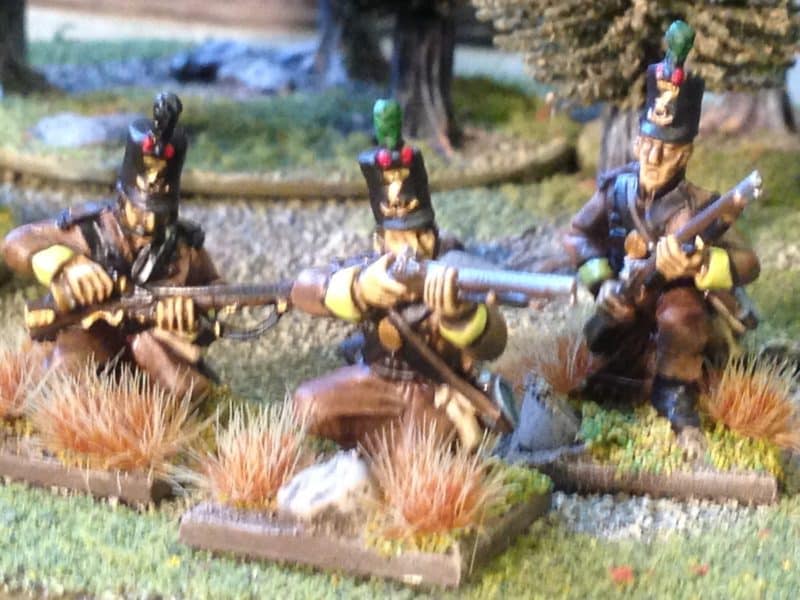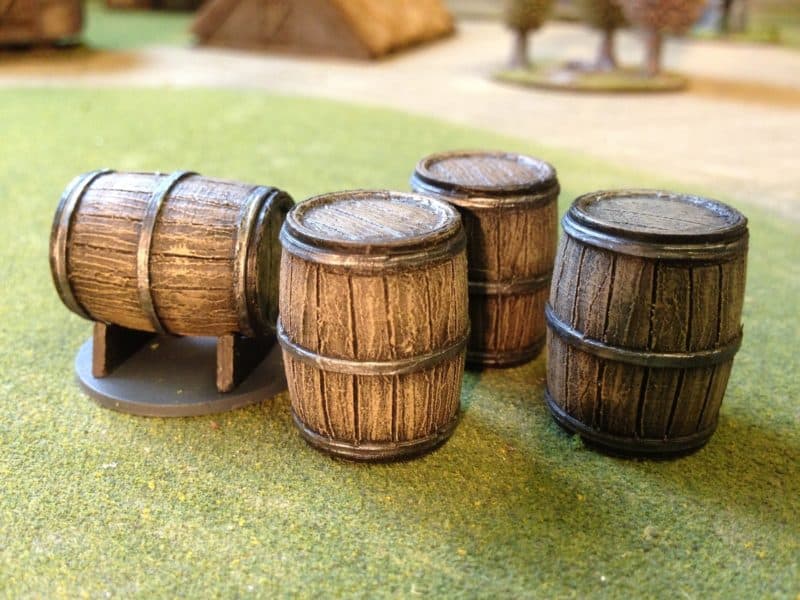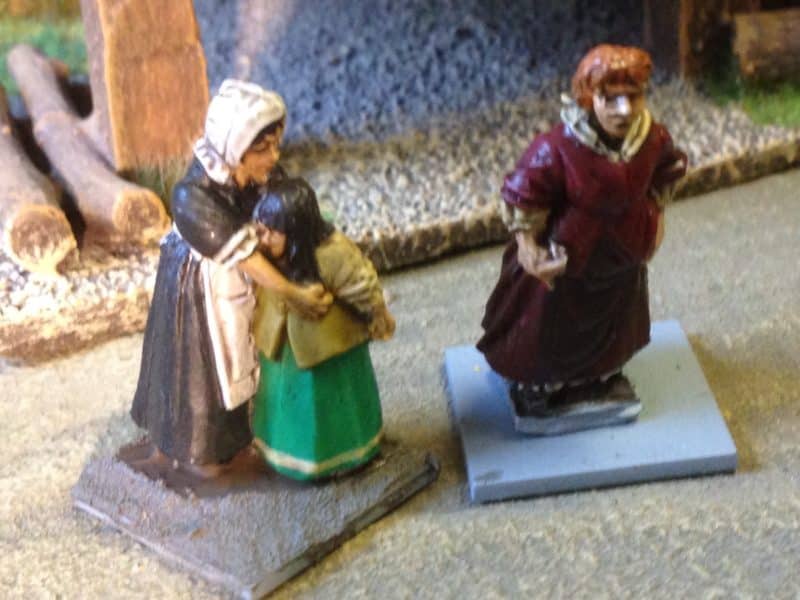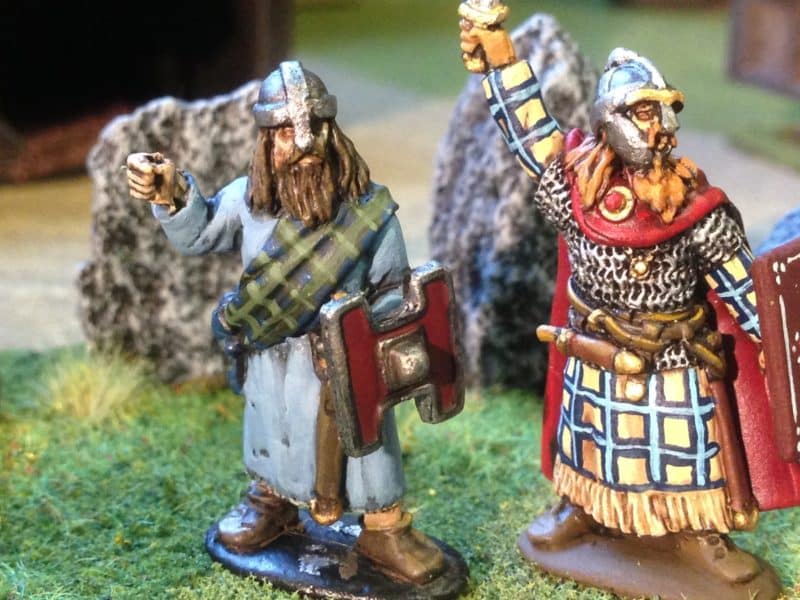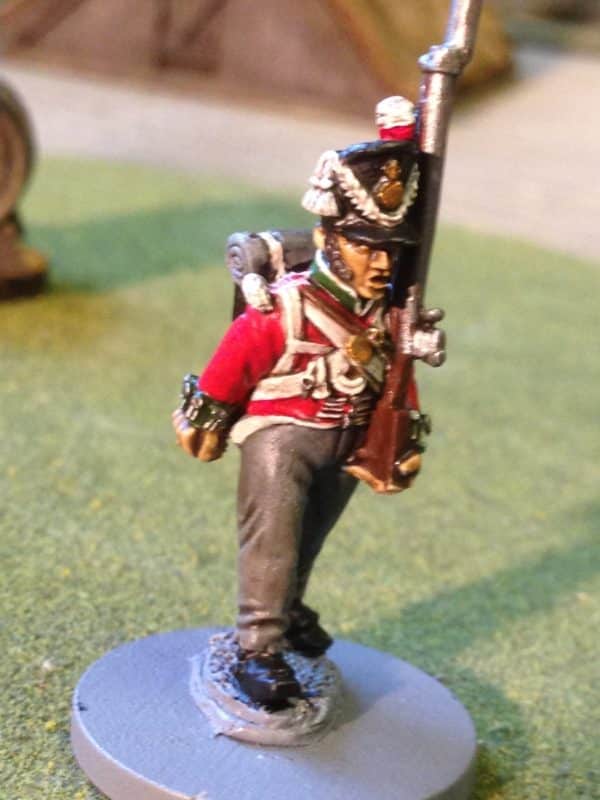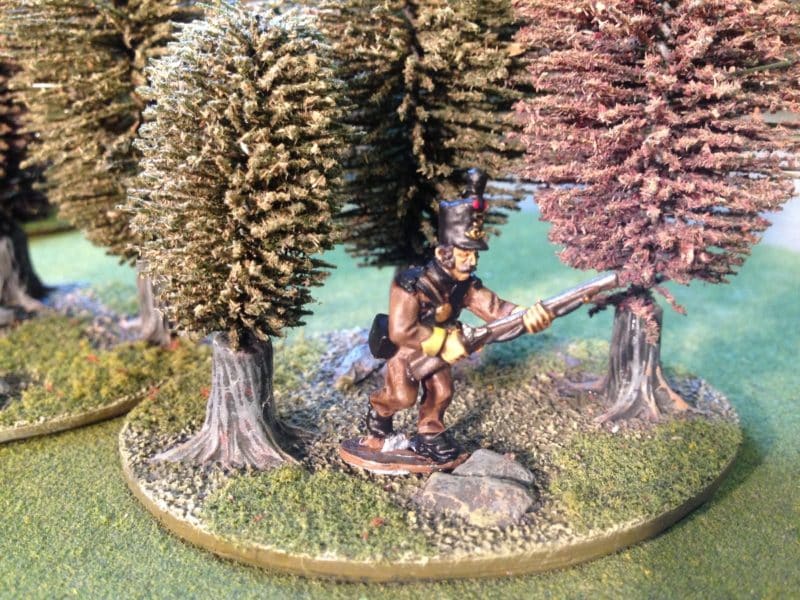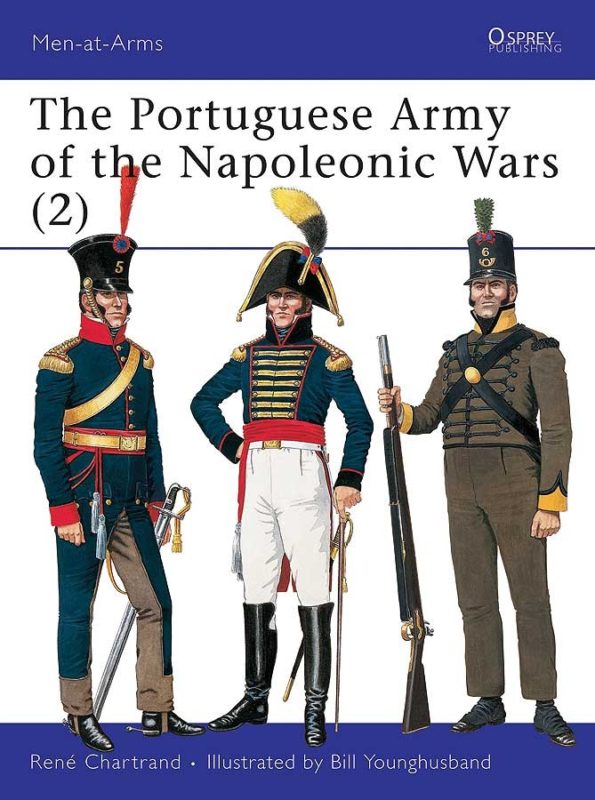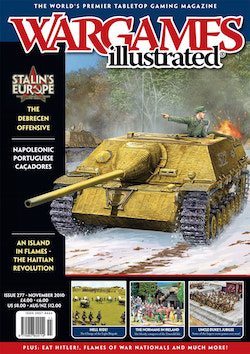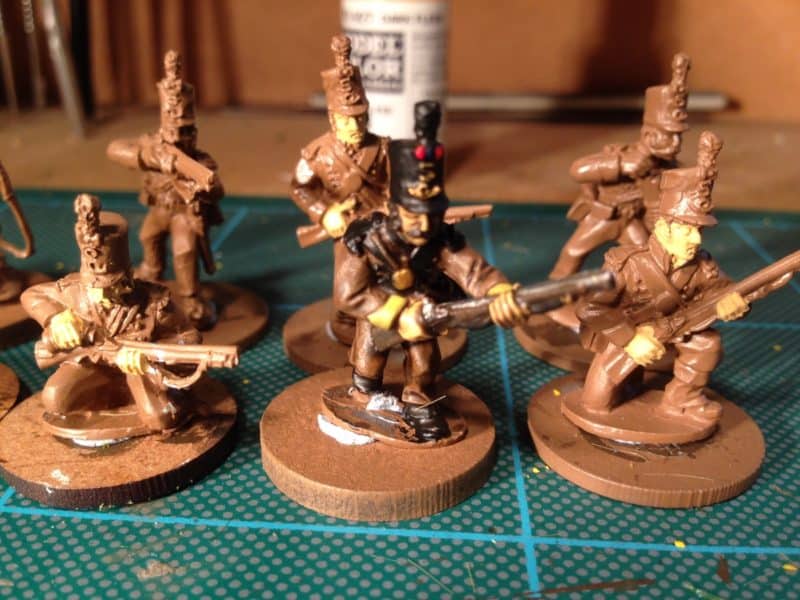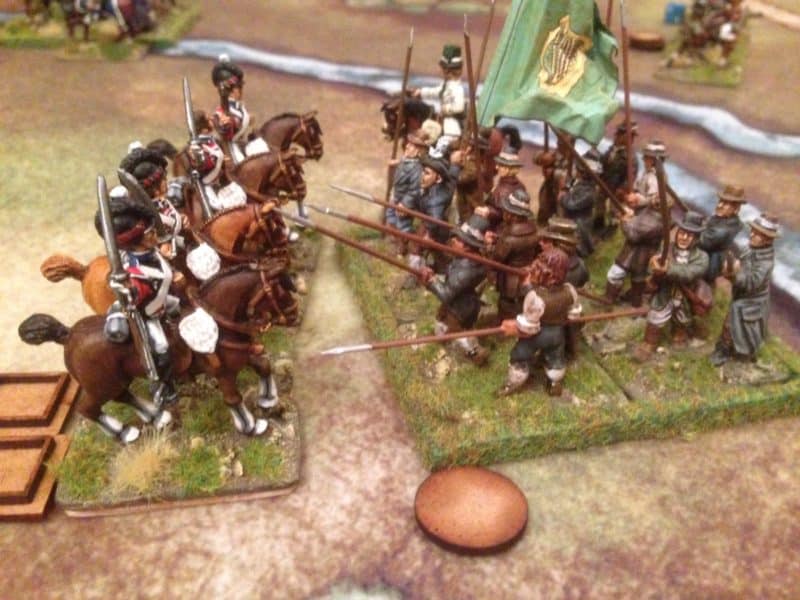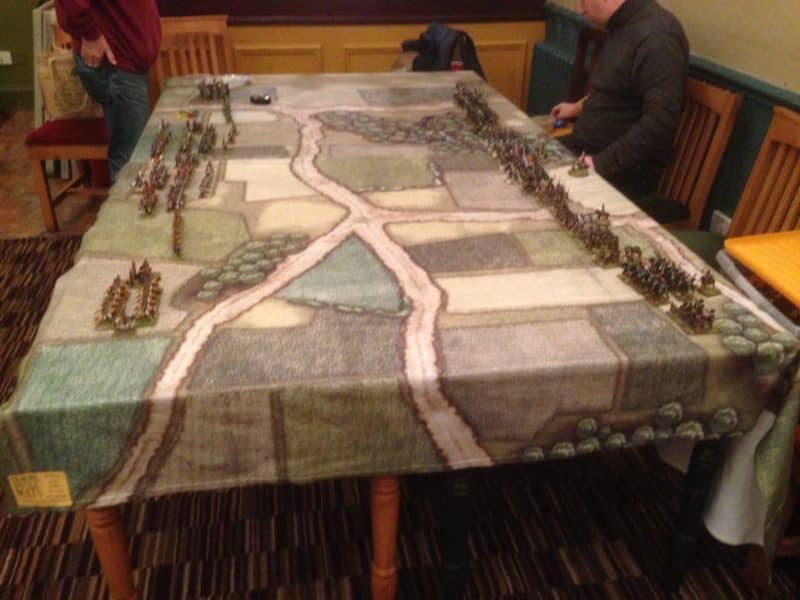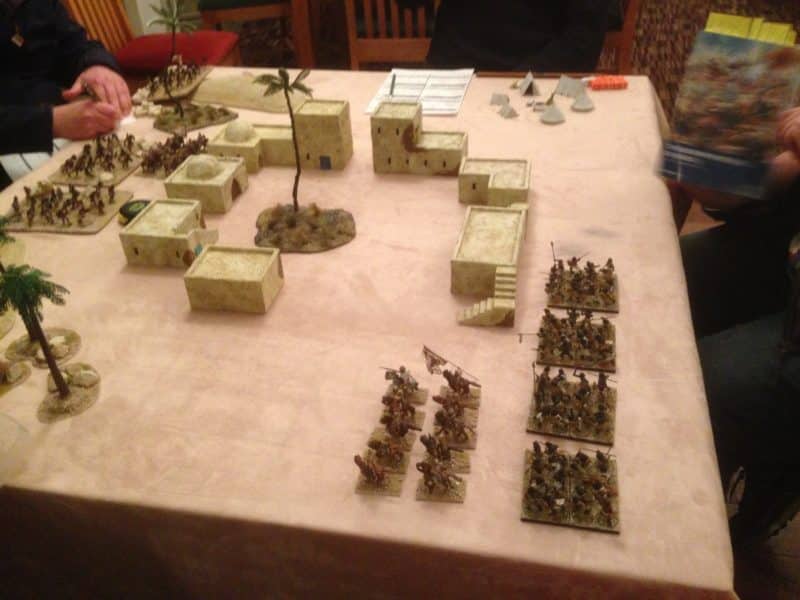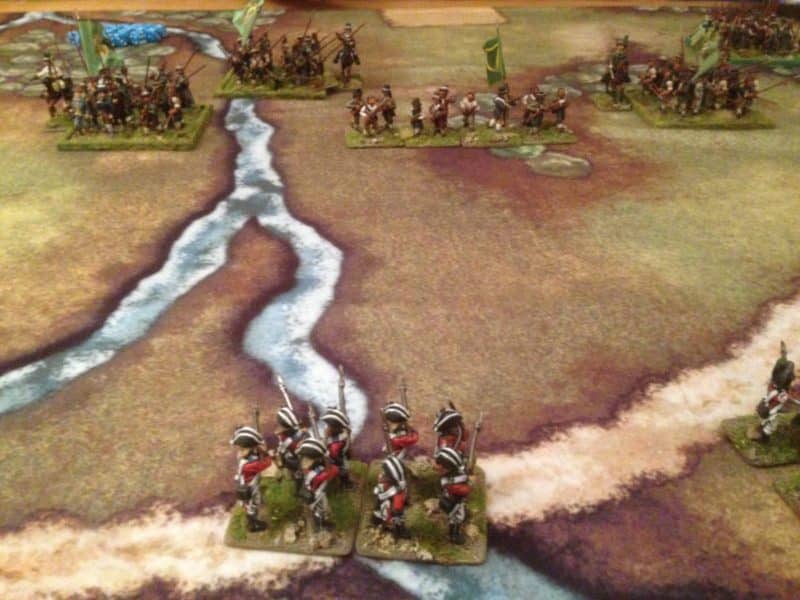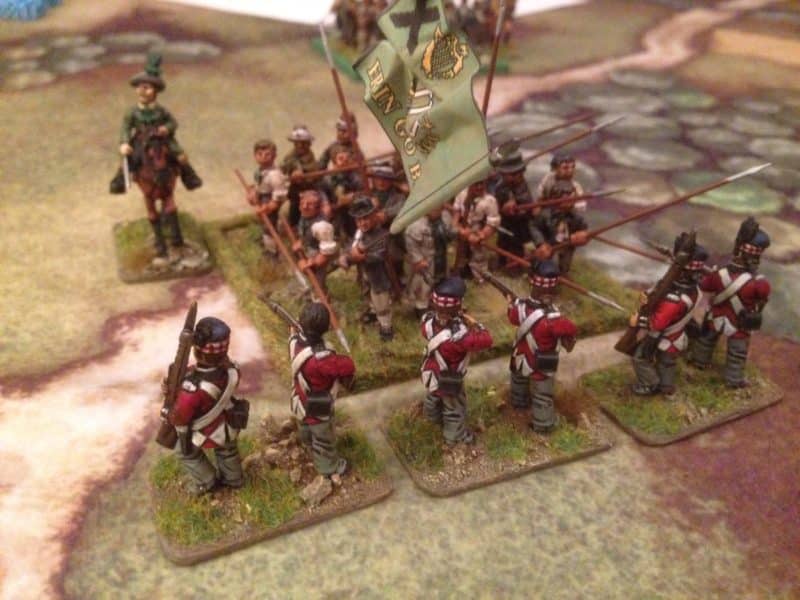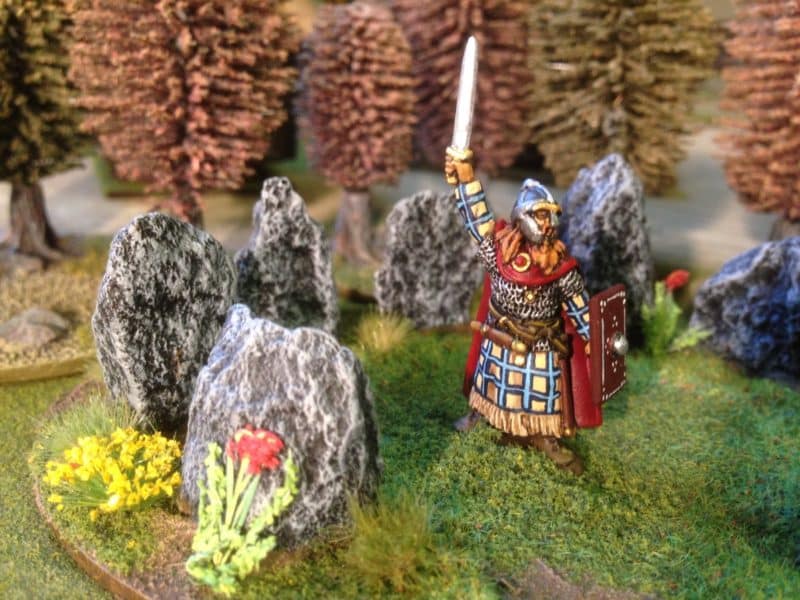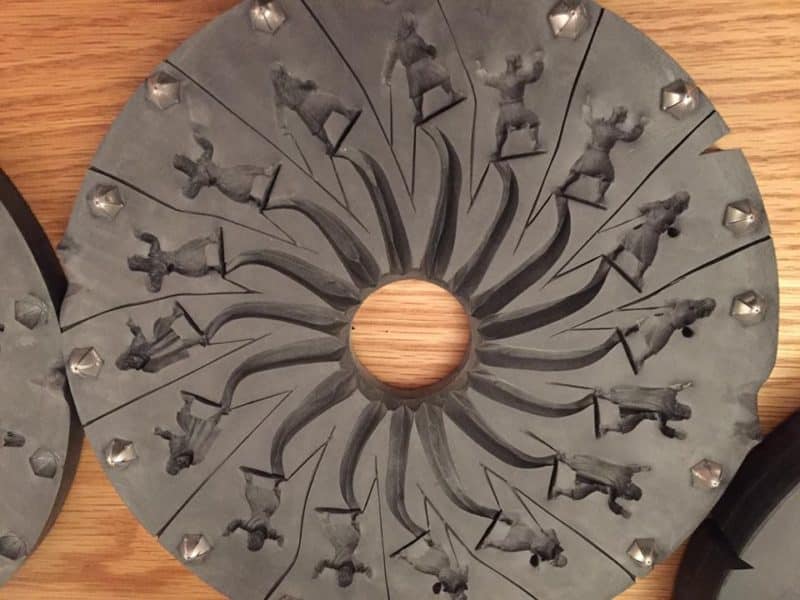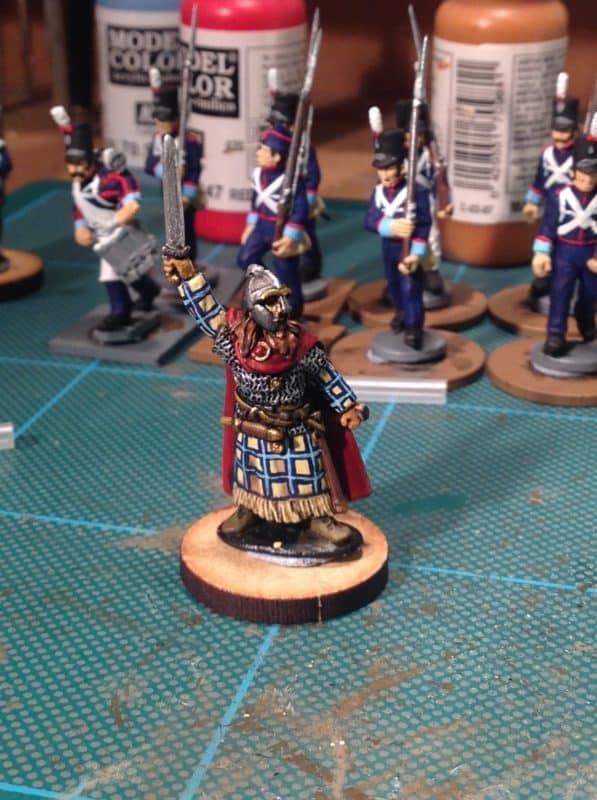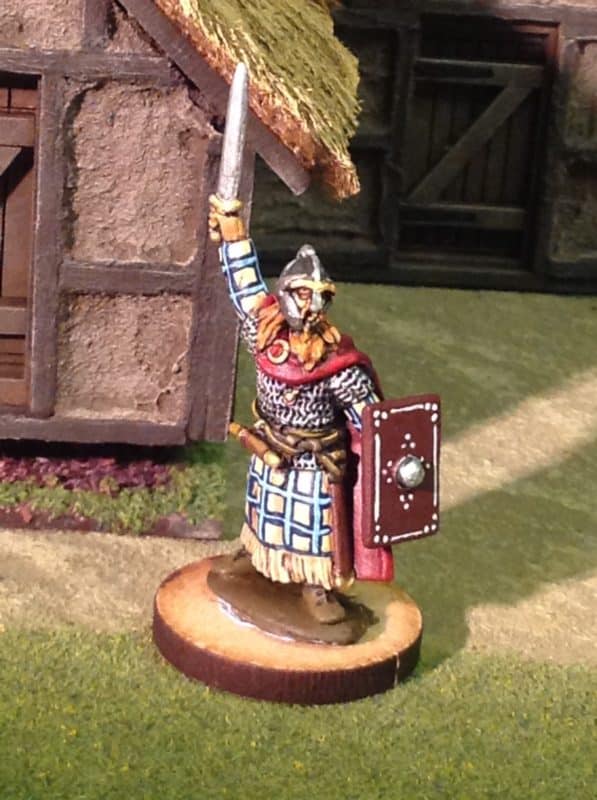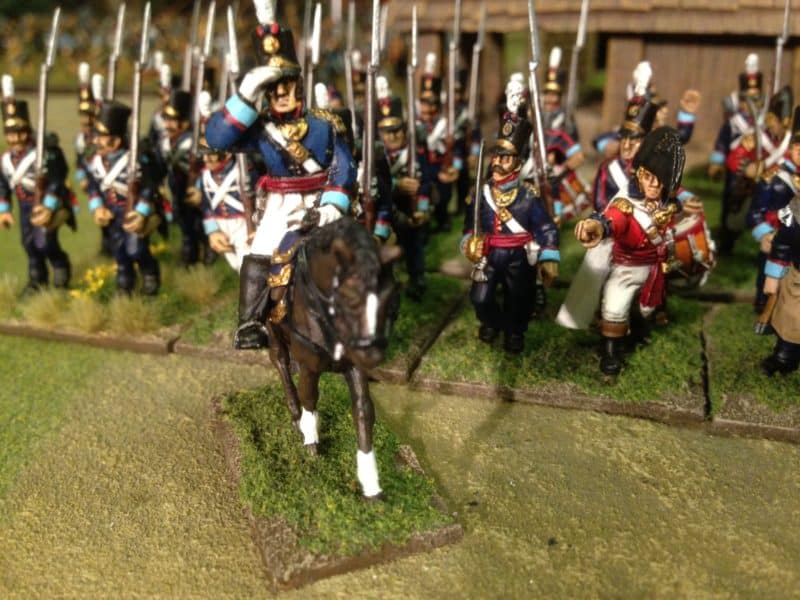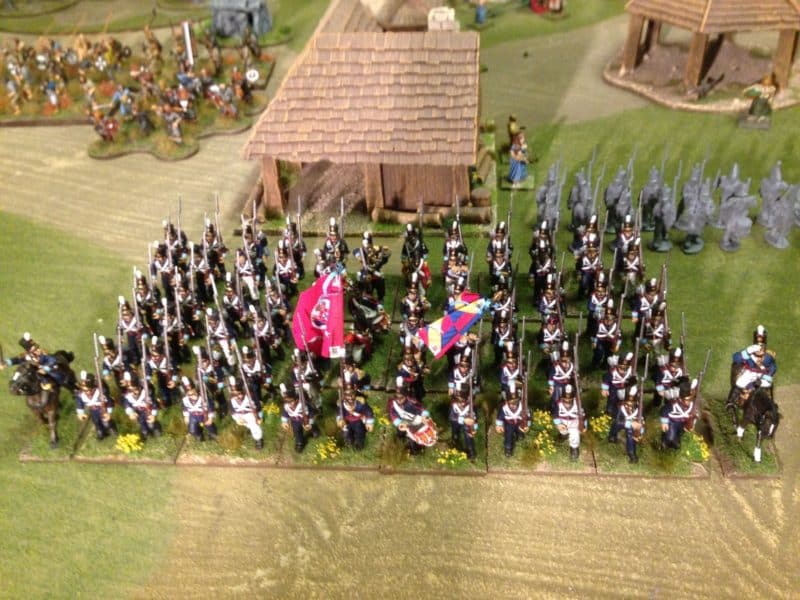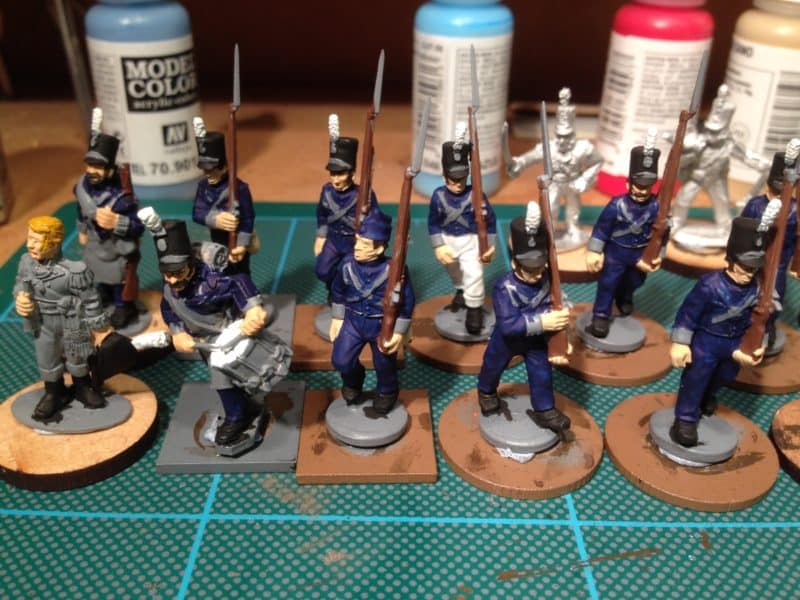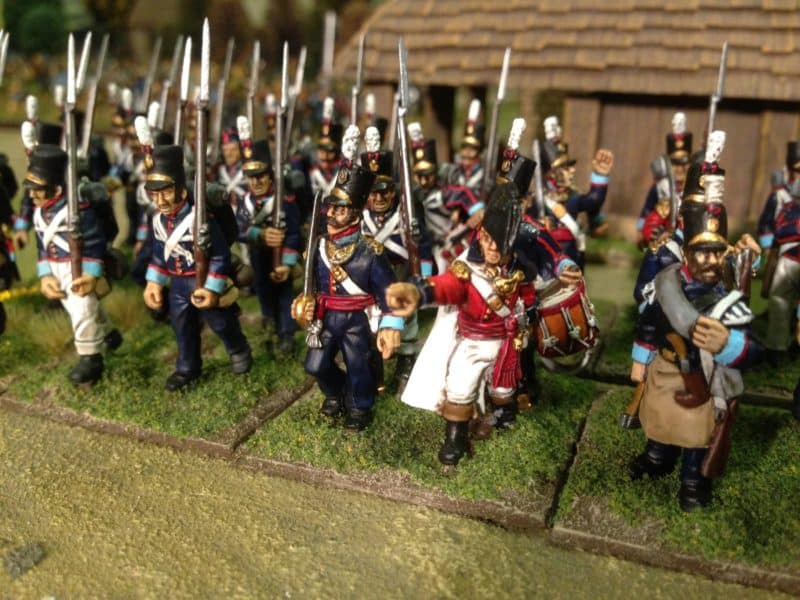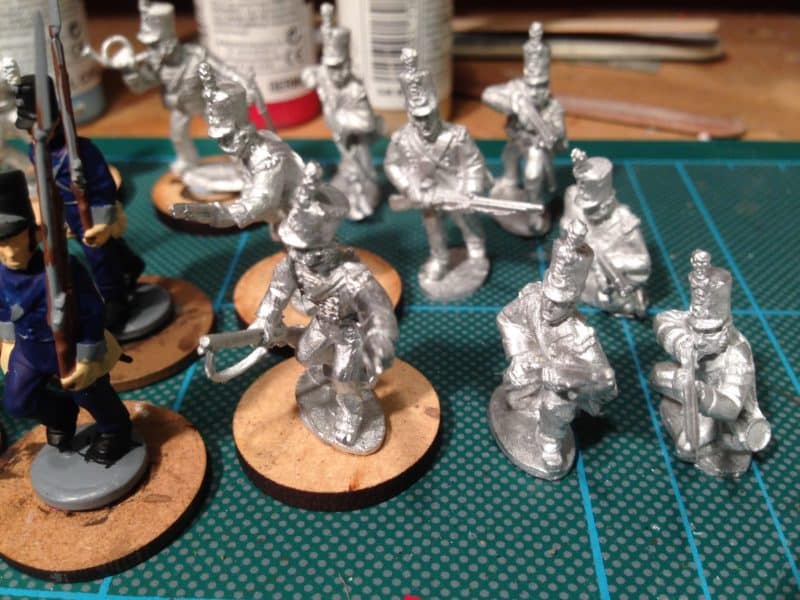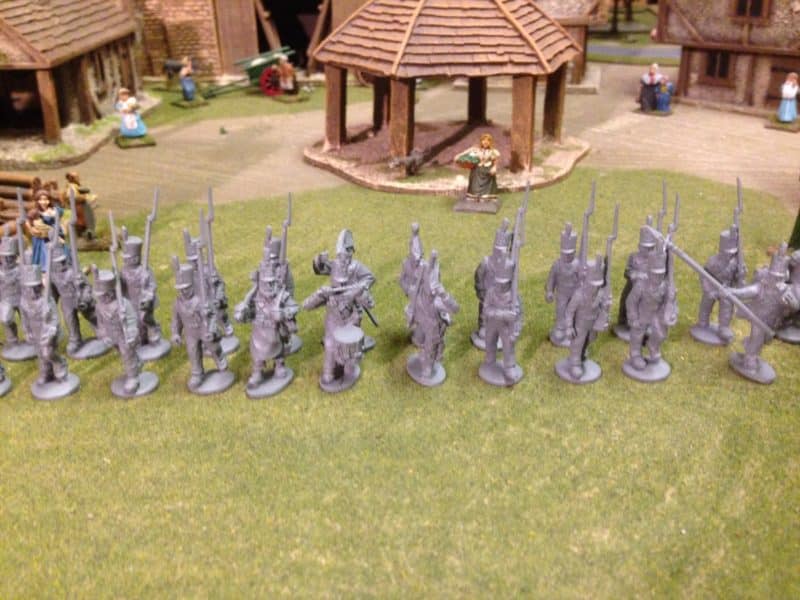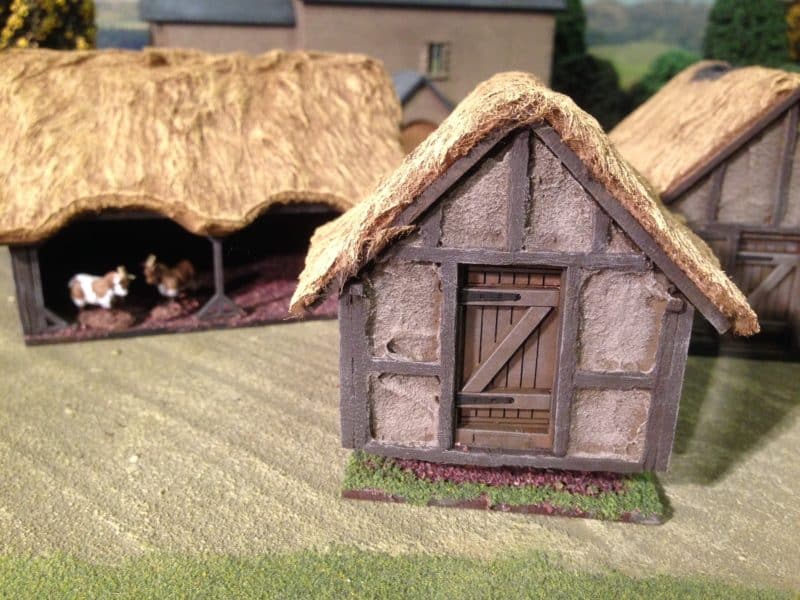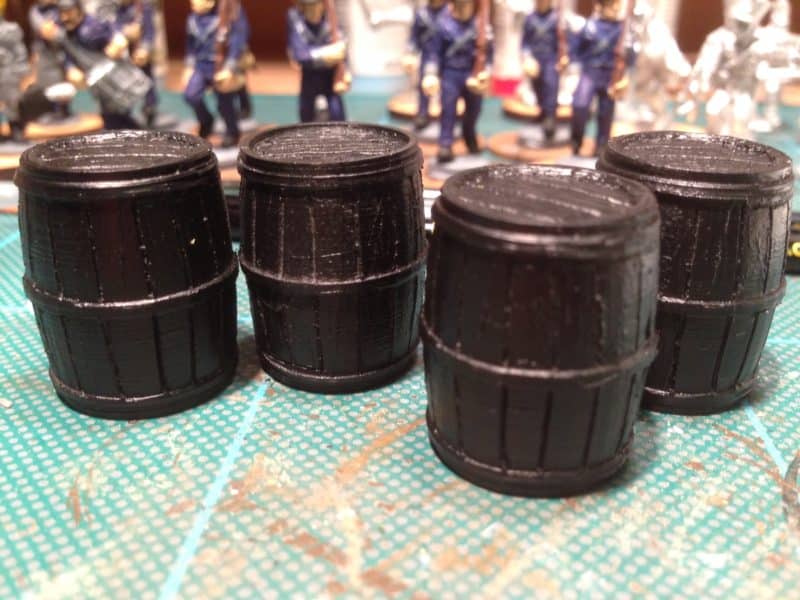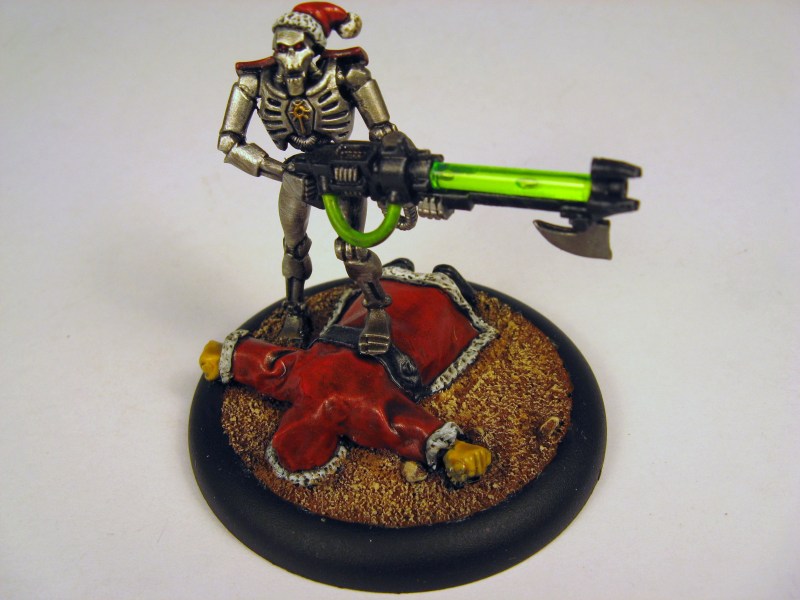I mentioned in last weeks blog that as well as deciding on a rules set to work to, it helps to have a theme running through your figure collection. In my case the theme is the British Army at Waterloo. I do not intend to paint every Battalion that was present but I am working towards a decent representation of the units that took part. This means that I have some discipline when it comes to buying and painting units and ensures that I do not go off at a tangent. Well not much…
One of the interesting body of troops that were present at the Battle is the 8th British Brigade of Infantry led by Sir James Kempt. It was part of Pictons 5th Infantry Division and was not only in the thick of the fighting at Waterloo but was heavily engaged at Quatre Bras, two days earlier.
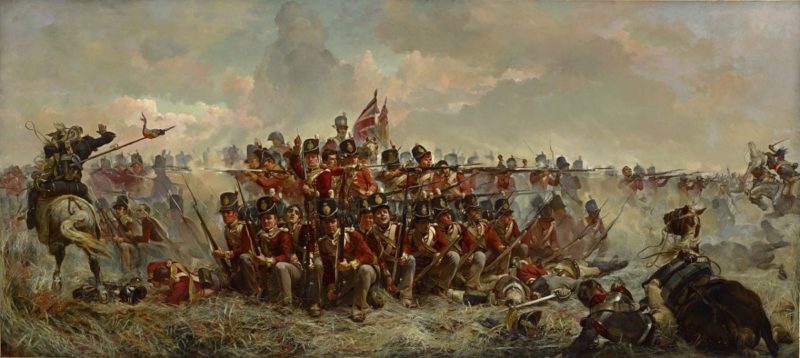
Lady Butlers painting of the 28th at Quatre Bras.
The Brigade is interesting to me because of the mix and variety of troops. It consisted of:
The 28th North Gloucestershire’s; a standard infantry battalion but equipped with stovepipe shakos and with yellow facings.
The 32nd Cornwall Regiment; a standard infantry battalion, Belgic shakos and white facings.
The 79th Cameron Highlanders; a Scottish regiment, green facings and of course, tartan kilts.
Six company’s of the 95th Rifles, the famous Light infantry regiment.
They were supported by the Divisional artillery, including Major Roberts Foot artillery battery of six guns.
I don’t think that you could do much better when choosing a ‘starter’ force for a Black powder army. I have already painted the 32nd Cornwalls – you can read how in these blog entries:
The 32nd ( Cornwall) Regiment of Foot
Soap Opera Painting
The 32nd Foot ready for action
So the next task was to batch paint the 28th North Gloucestershires. As usual, I consulted my favourite research sources, The Waterloo Companion by Mark Adkin, British Napoleonic Uniforms by C.E. Franklin, Ospreys Wellingtons Infantry by Brian Fosten and the most useful Mont St Jeans Website.
The Pictures on the Mont St Jean site are simply excellent to use as a painting guide:
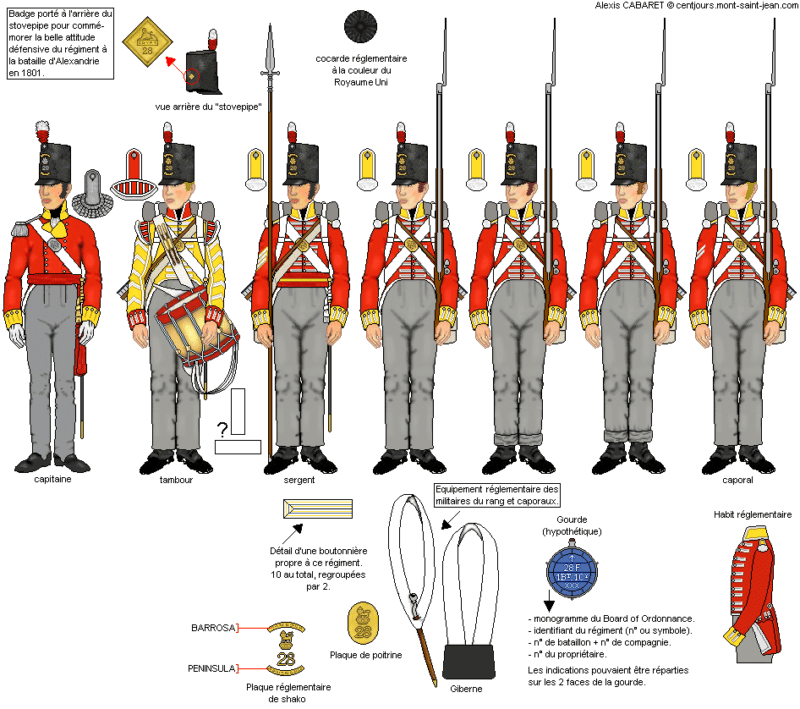
28th North Gloucestershire Regiment Centre Companys
Now the sharp eyed amongst you will have already spotted a discrepancy. Lady Butler has the 28th in Belgiac Shakos, whereas Mont St Jean shows them in Stovepipes – they both couldn’t be correct, could they? My first thought was that perhaps they were light infantry but I was further puzzled by the red and white standard plumes ( I thought that ‘lights’ had all had green plumes) and Shako plates – no bugle to indicate that they were light infantry. That said, the Shako plates were different to most regiments standard one piece large plate. The plot thickened….
It was time to consult the internet once again and to risk diving into the murky world of forums and social media. Those dangerous habitats of armchair painters and armchair generals, button counters and lace pendants, crusty old buggers of immoveable opinions – you get the picture. In fact even as I typed this blog, I thought that I could hear the sound of caps locks on keyboards clicking on like a chorus of safety catches on AK47s….
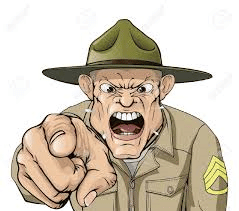
They were wearing STOVEPIPES!!!!!
Of course I jest… just a bit. I am actually in awe of the expertise found on the forums and generally this expertise is passed on with good grace and even better, with links back to the primary references. My usual port of call is the TMP, The Miniatures page, and the search facility can reveal some fascinating information from some very knowledgeable people. So what did I find out? Well, it seems as though the 28th had a number of differences from the ‘standard’ infantry battalion. The Shako plate was indeed as shown above and not a one piece item. In addition, there was a small plate on the rear of the Shako, awarded after the battle of Alexandria in Egypt 1801, when the front and rear ranks of the 28th were simultaneously engaged, whereby the soldiers received the order “Front rank stay as you are, rear rank about turn”. The conduct of the regiment won for it the distinction of wearing badges both at the front and at the back of their head-dress.
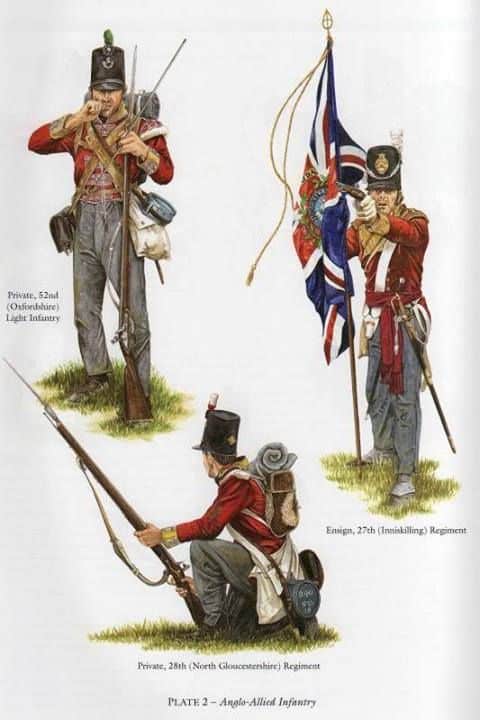
Bottom picture shows rear cap badge and French style Knapsack
And so to the head dress. It seems that the 28th were still in possession of their Stovepipe shakos at Waterloo, although this is by no means a sure thing. Lady Butler seems to think that they wore belgiac shakos and there is at least one contemporary account that confirms this. However, there are other accounts and sketches that indicate that they definitely had stovepipes and that these were also worn by the Officers. Who knows what is really correct? I tend to go with the idea that the shakos were stovepipes based on what I have read but I am acutely aware that what I am reading is someone else’s edited research. After all said and done though, I am painting a unit to be used on the wargames table not an exhibit in a museum, so I am happy to go with the more interesting option.
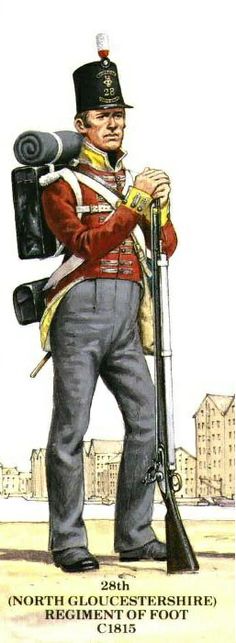
28th with Trotter Knapsack….
The other piece of information that I turned up was that the 28th used French Knapsacks rather than the standard British Trotter knapsack. Once again, I have read conflicting evidence. One account claimed that all men in the Battalion had the French version. Another, claimed that it was just the Grenadier company. Both stories seem to come from an account stemming yet again from the Egyptian Campaign. It is said that the 28th ‘liberated’ a French supply depot containing the superior French Knapsacks which they then adopted as their own. It strikes me that the chances of these knapsacks lasting for nearly 15 years in service, with men coming and going, are remote but I have no knowledge of how long a knapsack would last… Finally, just to add to the controversy, I have read that the whole ‘knapsack story’ was made up by a Victorian writer.
What is for sure is that the Battalion is an interesting subject with some good opportunities for some artistic licence in both modelling and painting. I’m happy to incorporate some of these idiosyncrasies into my battalion and I’ll show you my interpretation in my next blog.
